|
Shepherds of Christ |
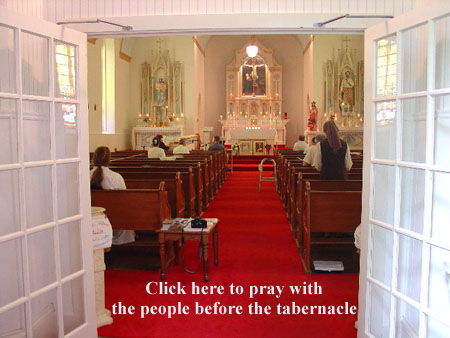 |
December 9, 2011
December 10th Holy Spirit Novena
Scripture selection is Day 1 Period II.The Novena Rosary Mysteries
for December 10th are Glorious.
China Retreat
December 10th - 13th
Please tune in!
Funds are needed to reprint
Fr. Joe's Cycle B Book.
Please help us.
Call 1-888-211-3041
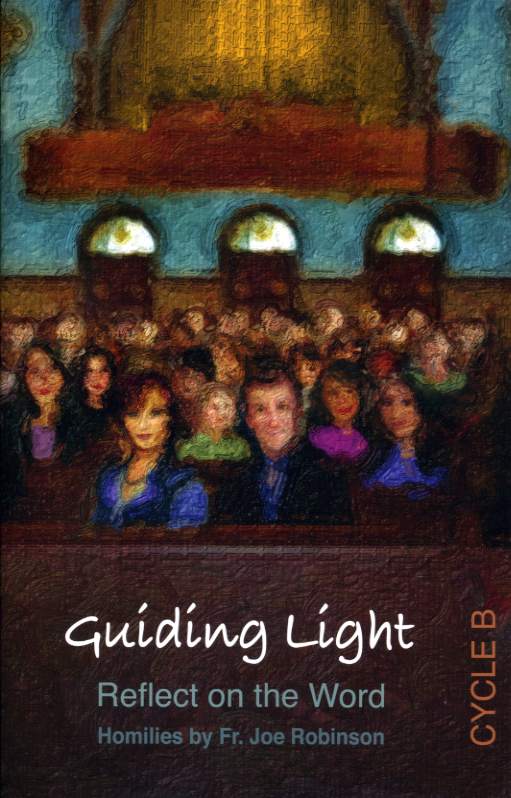
Available $15.00 plus shipping
Call Rosie
1-888-211-3041
The Florida Book Store
Please pray for a
special intention.
Through the intercession
of Fr. Carter and
Our Lady of Clearwater
please pray for Dan's healing.
Please pray for Jimmy &Adeline.
December 9, 2011 - Feast of St. Juan Diego
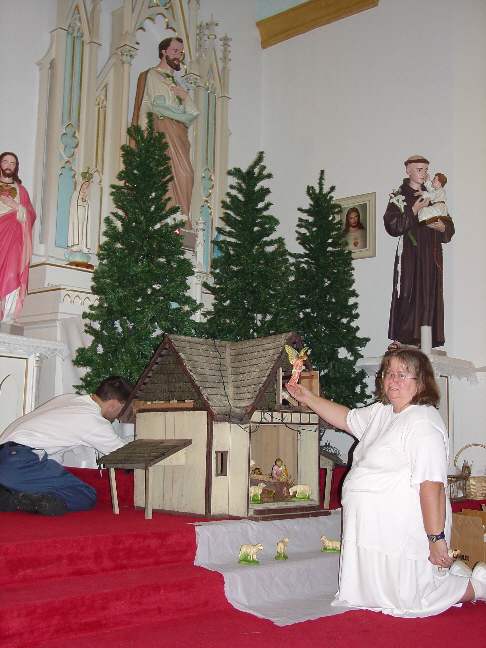
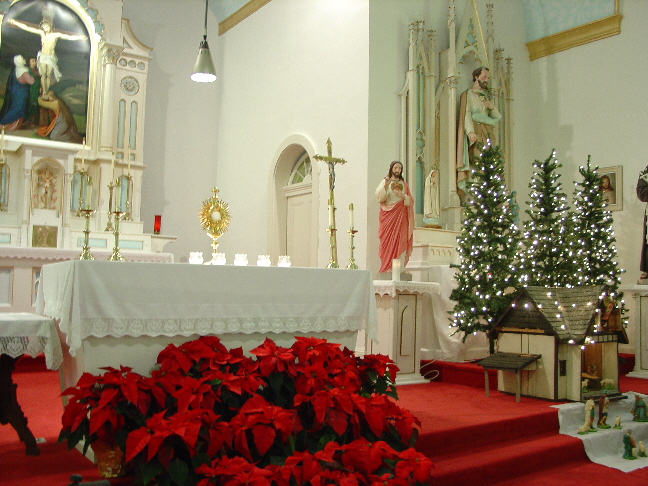
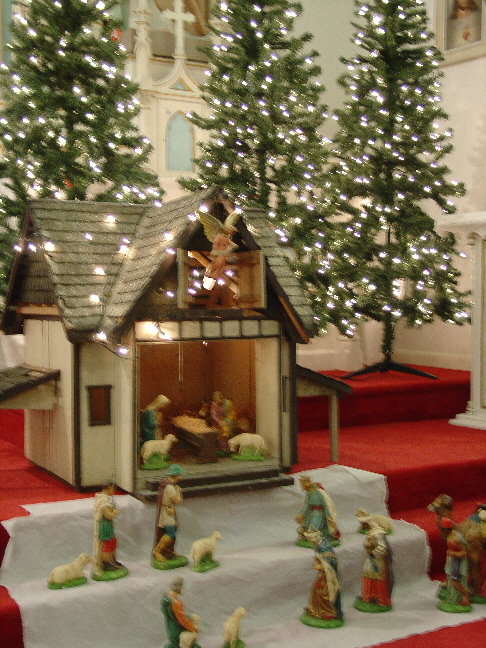
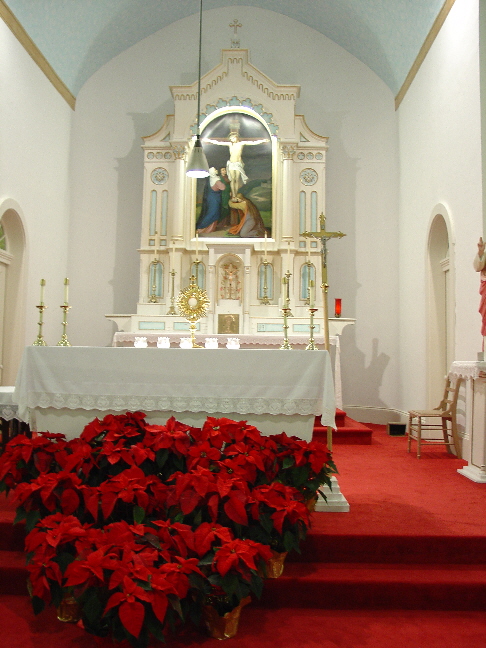
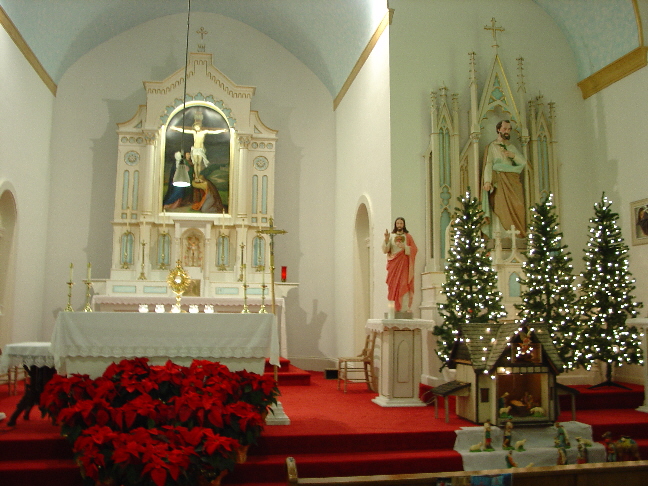

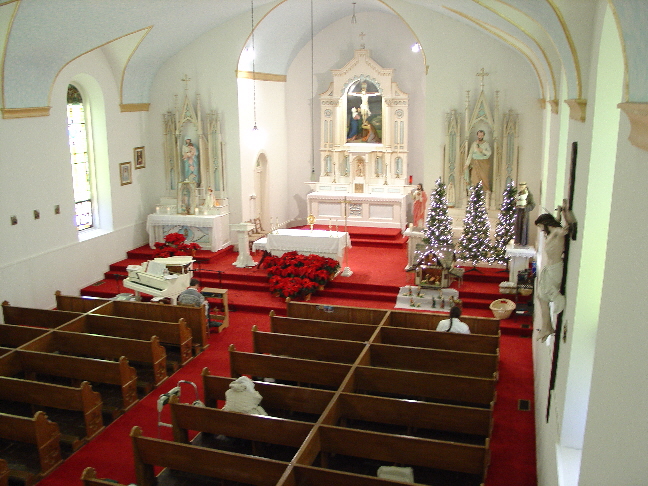
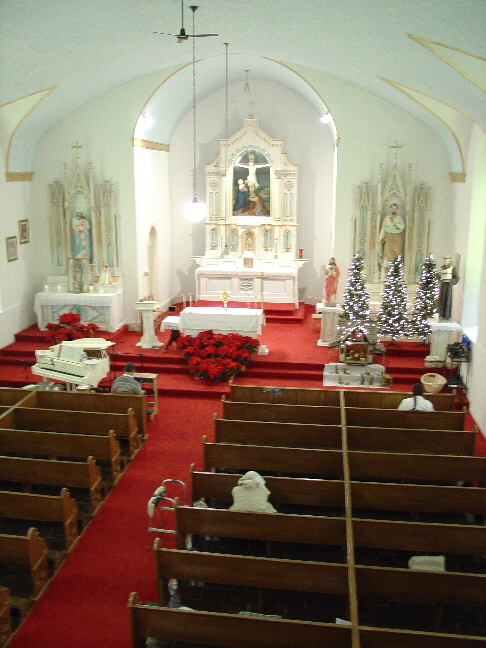
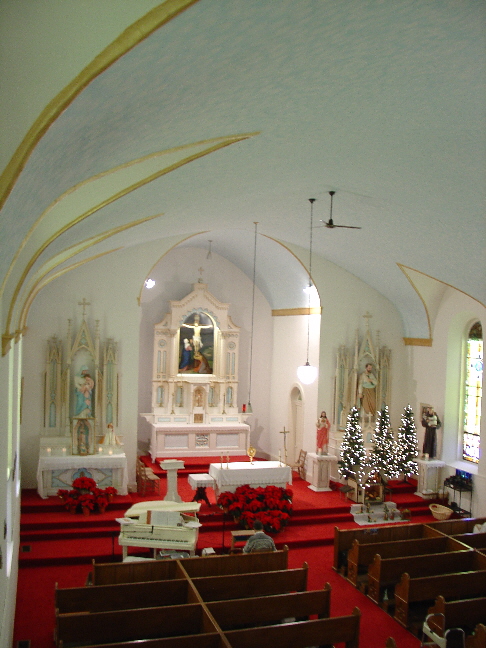
Given December 9, 2010
Happy Feast of St. Juan Diego
The mystery of Christ is
God's concrete plan of redeeming
man in Christ —
Excerpt from Response to God's Love by Fr. Edward Carter, S.J.
... In reference to Christianity, God himself is the ultimate mystery. Radically, God is completely other and transcendent, hidden from man in his inner life, unless he chooses to reveal himself. Let us briefly look at this inner life of God.
The Father, in a perfect act of self-expression, in a perfect act of knowing, generates his son. The Son, the Word, is, then, the immanent expression of God's fullness, the reflection of the Father. Likewise, from all eternity, the Father and the Son bring forth the Holy Spirit in a perfect act of loving.
At the destined moment in human history, God's self-expression, the Word, immersed himself into man's world. God's inner self-expression now had also become God's outer self-expression. Consequently, the mystery of God becomes the mystery of Christ. In Christ, God tells us about himself, about his inner life, about his plan of creation and redemption. He tells us how Father, Son, and Holy Spirit desire to dwell within us in the most intimate fashion, how they wish to share with us their own life through grace. All this he has accomplished and does accomplish through Christ.
end of excerpt
The Mass is the sacrifice of
Calvary, sacramentally made
present —
Sacrifice
Man must surrender
himself to God out of love —
God is the Creator —
Man is the creature —
Man is to respond as perfectly
as possible to the
loving demands of His Creator.
God wants man to completely
give Himself to God —
Everything man has is a
gift — man becomes
more perfect by developing
these gifts according
to God's will —
Men's gift of self is centered
according to the divine
will —
The theological virtues of
faith, hope and love unite
man directly to God —
Man's offering oneself completely
to God — takes place chiefly
in the will — under the
guidance of the virtue
of religion, for the purpose
of adoration, thanksgiving,
petition and propitiation —
The interior disposition means
the will is disposed to what
God wants —
The disposition is paramount —
Then there is a ritual offering — EXTERIOR of
interior offering —
St. Augustine says: A visible
sacrifice = is a sacrament
or sacred sign of an
invisible sacrifice —
Man's offering is one of
love, adoration, thanksgiving
etc. —
Here we have the second constituent
element of sacrifice; the external,
ritual oblation to God of some
material gift which symbolizes
man's interior offering of himself
3) Immolation of the victim
The shedding of the blood purified
and united to God —
4) Acceptance of the sacrifice by
God
5) Partaking of the Sacrificial
Victim —
The victim is offered
to Divinity —
We have briefly described
the general economy
of sacrifice through -
out history —
(excerpt)FOUR The Sacraments and the Mass
12b) Christ's Sacrifice
We will consider Christ's sacrifice according to the same constituent elements of sacrifice already discussed. In this treatment we will follow the theory of the unicists, who hold that Our Lord offered only one complete sacrifice as opposed to the dualist theory which says Christ offered two complete sacrifices, one at the Last Supper, and one on Calvary. The Church allows either position. We prefer to follow the position of the unicists, since this seems to give a greater unity to Christ's sacrifice, and indeed to the total mystery of Christ. This profound unity of Christ's mystery has become more and more apparent with the scriptural, liturgical and theological renewals.
1) The Interior offering of Our Lord
The sacrifice which Christ offered for the redemption of the world was first and foremost an interior moral act. Christ's life possessed its great value because of His interior dispositions. His entire life was a constant gift of Himself in love to the Father and to mankind, and Calvary was the supreme expression of this gift. This gift of self was regulated by a perfect conformity to His Father's will.
Christ not only was constantly living out this interior disposition of sacrifice, but He strove to inculcate the necessity of it in the Jews of His time. He constantly opposed a false and legalistic concentration on the mere externals of Jewish purifications, for such an attitude tended to diminish the necessary internal dispositions. The synoptic theology of sacrifice stresses this attitude of Christ. Bernard Cooke states: "This insistence of Jesus on internal dispositions characterizes the Synoptic theology of sacrifice, which continues and completes the prophetic emphasis on the moral and individual aspect of sacrifice. . . . One must be careful, however, not to exaggerate the opposition (either in the prophets or in the Synoptic Gospels) between cult and internal dispositions of soul."
132) Ritual Oblation
As we have said, man, because of his corporeal and social nature, has always desired to express the interior oblation of sacrifice in an external, ritual oblation. So it was with Christ. Unlike the dualists, who maintain that Christ's interior offering was sufficiently exteriorized during the passion itself, the unicists maintain that the only place where we can locate a ritual oblation is at the Last Supper. This ritual oblation cannot be found in any other phase of Christ's sacrifice – from the Garden to the Cross – despite the efforts of some to do so. Notice, too, that in the case of Christ's sacrifice, the ritual oblation of the Last Supper is of a victim-to-be-immolated rather than of a victim already immolated.
Christ's ritual oblation at the Last Supper possessed a many-faceted signification. We will comment on several aspects. We begin by recalling the social implications of the ritual oblation. This social element is present in Christ's actions at the Supper. He told the Apostles to do what He was doing in commemoration of Him. This would assure that in the future the head and members of the Church would sacramentally renew Christ's redemptive, sacrificial act. In this manner the members of Christ's Body would not passively receive the graces of Christ's sacrifice, but rather would assimilate these graces by actively entering into Christ's act of atonement. Consequently, Christ's sacrifice, in its perennial, sacramental renewal down through the ages, was to be of a social, corporate nature.
Closely related to this social aspect of Christ's actions were the covenant significations of the Last Supper ritual. This is brought out by observing the connection of Christ's actions with two of the chief types of Jewish sacrifices we have previously mentioned, the sacrifice of the pasch and that of covenant. In both of these the concept of sacrificial blood enters in.
The Last Supper was a paschal meal, or at least had a paschal significance. The Jewish paschal meal commemorated the Jewish people's delivery from Egyptian slavery, which, in turn, symbolized their deliverance from sin. The enslaved Jews had been freed from Egyptian tyranny with the aid of the blood of the paschal lamb. For this blood, we recall, had exempted Jewish homes from the visit of the exterminating angel. How fitting, then, that at the paschal supper Christ instituted the eucharist in which His blood is sacramentally shed. He is the new paschal lamb whose blood frees us not from Egyptian slavery but from slavery to sin. The old pasch, a covenant communion between Yahweh and His chosen people whom He delivered from Egypt, gives way to the new pasch, the new covenant communion between God and His people.
These ideas concerning covenant lead us to a consideration of the second type of Jewish sacrifice linked with Christ's actions at the Last Supper. We recall that in the sacrifice of the covenant Moses sprinkled sacrificial blood on both the altar representing Yahweh and the people. This blood, considered to be source of life, united Yahweh and His people in a union, a common life, or, in other words, a covenant. We understand, consequently, the deep significance of Christ's words at the Last Supper when He referred to His blood as being that of the new covenant. This is the blood which establishes between God and men a new union, a new covenant.
3) Immolation of the Victim
The central importance of Christ's sacrificial blood is evident. It is the blood of the new paschal lamb. It is the blood of the new covenant, the blood which redeems man. The shedding of this blood occurred during the immolation of Christ's passion-death. Schillebeeckx points out the significance of this immolation in blood: "The Blood of Christ is a theme that is truly central in the primitive Church, as Scripture shows it to us. This death sanctifies mankind, reconciles, establishes peace, redeems, constitutes the Church, and therefore unites man in communion with God and his fellow men. We are redeemed in sanguine, through the blood of Christ – this we find on almost every page of Scripture. It is impossible therefore to spiritualize Christ's sacrifice, to make it merely an internal act of love. There was indeed the act of love, but it was embodied in the sacrifice of blood."
14At this point we also note the profound unity of Christ's sacrifice. We observe that priest and victim are one and the same. At the Last Supper, Christ is chiefly priest; on Calvary, He is chiefly victim. Yet He is always priest and victim. Christ does not perform the immolation. He rather endures it. However, this is sufficient since it is not necessary for the priest of the sacrifice to achieve the immolation himself.
4) The Father's Acceptance of Christ's Sacrifice
We have demonstrated that one of the constituent elements of sacrifice is its acceptance by God. In the case of Christ's sacrifice, this acceptance by the Father was accomplished in a most glorious fashion – through Christ's Resurrection and Ascension. The Father glorified His Son for the perfect, whole-hearted sacrifice of Calvary. This glorification shall endure for all eternity, since Christ reigns at the right hand of the Father as eternal victim, as eternal, glorified victim. Through this glorified Christ the treasures of His sacrifice are distributed to all men: "Christ's glorification is the mystery whereby the treasures of his divinity flow to us, through the opening of his mortal life."
15c) The Sacrifice of the Mass
Some contemporary authors, while not necessarily de-emphasizing the sacrificial nature of the Mass, are giving a renewed emphasis to the concept of the Mass as banquet or meal. This is all to the good, as long as the sacrificial structure is not allowed to recede to the background. In this regard it is well for us to recall the mind of the early Church. Jungmann says: "The first centuries of Christianity, which had built the framework for the celebration of the Eucharist which is still followed today, had laid down two basic thoughts: The Mass is the memorial of the Lord, and it is the sacrifice of the Church. These two thoughts are expressed just as clearly and simply today: '. . . calling to mind the blessed passion – we offer to your sovereign majesty – this pure sacrifice.' "
17We should always unite the concepts of the Mass as sacrifice and the Mass as meal by realizing that the eucharistic meal is an integral part of the sacrifice. It is its conclusion.
We should also be aware that the Mass is a covenant sacrifice. It is the sacramental renewal of Christ's covenant sacrifice. The Mass is the central act of our covenant life in Christ, and therefore it embraces the four great dimensions of covenant love. In Christ, by the action of the Holy Spirit, we open ourselves in a special manner during the eucharistic liturgy to the Father's love and we respond to that love. In Christ and His Spirit we also pledge ourselves at Mass to go out in a deeper love to the members of the People of God and to all men. We also commit ourselves anew to be open in receiving the love of others. According to these various perspectives, the Mass above all is an action of love.
1) Interior Oblation of the Mass
The chief priest and victim of the Mass is the same as the priest and victim of the Last Supper and Calvary, Christ Himself. Christ makes this interior offering of Himself in the Mass for the same ends as were present in His own unique sacrifice – adoration, thanksgiving, petition and satisfaction.
However, Christ is not the only priest at the Mass as He was at the Last Supper and upon Calvary. All the members of the Mystical Body are priests along with Christ. To be sure, there is a difference between the hierarchical priesthood of bishops and priests and the universal priesthood of the faithful. This difference is one of essence and not merely degree. The point we wish to stress, however, is that the universal priesthood is a real participation in Christ's priesthood given through the sacraments of baptism and confirmation.
This concept of the priesthood of all the Church's members is being stressed today in a special manner.
18 Jungmann, the outstanding liturgical theologian, gives us reasons why this concept of universal priesthood became relatively obscure for so many years. He states that the concept of the Mass as the Church's sacrifice faded into the background as a result of the Reformation. The Reformers maintained that there was only one sacrifice, the one which Christ offered upon Calvary. To counteract this heresy the Council of Trent and the theology consequent to it had to clarify that the Mass is a true sacrifice, but not an absolutely independent one. It is a sacrifice relative to the absolute one of Calvary and a representation of it. It was emphasized that the priest of Calvary is also the chief priest of the Mass. Because of such doctrinal controversies, the concept that Christ offers the Mass was alone considered important. The concept that the Mass is also the sacrifice of the Church practically disappeared. Finally, Jungmann notes that today we are returning to the balanced view which meaningfully recognizes that the Mass is not only the sacrifice of Christ, but also that of the Church.19 This stress on the Church's part in the Mass is logically connected with the contemporary emphasis on the priesthood of all the members of the People of God.As Christ is not the only priest of the Mass, neither is He the only victim. Again, all the members of the Church are victims along with Christ. Various Church documents attest to this. For instance, Pope Paul VI officially calls attention to this: "It is a pleasure to add another point particularly conducive to shed light on the mystery of the Church, that it is the whole Church which, in union with Christ functioning as Priest and Victim, offers the Sacrifice of the Mass and is offered in it."
20 Therefore, the members of the People of God, united as priests to Christ the high priest, offer a combined victim to the Father: Christ and themselves. Such then in all its deep meaning and beauty is the first sacrificial element of the Mass.
2) Ritual Oblation of the Mass
Just as Christ's interior offering of Himself was externalized in a ritual oblation at the Last Supper, so is there an external, liturgical rite of the Mass. The importance of this many-faceted exteriorization is brought out by Vatican II's Constitution on the Liturgy.
As mentioned before, this exteriorization of the internal oblation is according to man's social and corporeal nature. That it is in harmony with the social part of man is evident from the fact that the external rite assembles the People of God to worship together as a community. The individual members are consequently enabled to help one another to achieve the proper worship of God. The Constitution gives stress to this social aspect of the liturgy. It states that the very nature of the liturgy demands that all the faithful be led to a full and active liturgical participation. Such is in keeping with their vocation as "a chosen race, a royal priesthood, a consecrated nation" (1 P 2:9). The Constitution emphatically states that such full and active participation on the part of all the people is the chief aim of the liturgical renewal.
21As also previously observed, the external rite is likewise according to man's bodily nature. In the case of the Mass (and the sacraments also) we observe that the very validity of the sacrifice depends on having the proper materials for the offering – bread and wine – and on the use of the proper form of consecration. The external, the ritual, the sensible, are indeed indispensable.
In all this we note the great law of incarnation. The Incarnation established a set pattern for the redemption of the world, redemption taken both objectively and subjectively. Christ redeemed the world through His sacred humanity. This humanity is, then, the gateway to the divinity, to eternal life.
As Christ's created humanity was indispensable for accomplishing the sacrifice of the objective redemption, so are created things necessary for the eucharistic sacrifice of the subjective redemption. This fact calls to mind the thought of Teilhard de Chardin. Teilhard holds a world concept in which all things, natural and supernatural, spiritual and material, are united in a single and organic unity. The pole of this unity is the person of the Incarnate Word, towards whom the whole of creation converges.
22 In such a concept the law of incarnation is developed to the utmost, a fact brought out by the following words of Teilhard: "Let us remember that the supernatural nourishes itself on everything."23At various times in the history of Christian spirituality, the Church has been plagued with an exaggerated spiritualism rising out of various sources. Such a spiritualism, looking upon material things as more of a hindrance than a help, is foreign to the true Christian spirit. A true theology of the Incarnation, a theology which the Church so well concretizes in her liturgy, can lead to no other conclusion.
It is no accident that a meaningful incarnation spirituality is developing concomitant with the liturgical renewal. Although we would not want to say that the incarnational element outweighs the transcendent element in the Church's portrayal of the Christian life, yet she is leading the faithful of all vocations to a deeper incarnationalism. The Church is accomplishing this through a variety of ways. She is achieving this incarnationalism, for instance, through the great social encyclicals, through the documents of Vatican II, and, in reference to our present topic, through a revived liturgy.
There is a deep significance, and a rich world of thought connected with the second sacrificial element of the Mass: the ritual oblation which incarnates the interior oblation.
3) Immolation of the Victim
Christ, the chief victim of the Mass, has been immolated once and for all in the offering of His own unique sacrifice. And yet, since the Mass is a true sacrifice in its own right, we logically look for an unbloody immolation of Christ the victim. Where do we find this immolation? Traditionally it has been seen to be present in the double consecration of bread and wine. This double consecration symbolizes the separation of Christ's blood from His body, and, consequently, symbolizes His death. Pius XII's encyclical, Mediator Dei, states: "Thus the commemorative representation of His death, which actually took place on Calvary, is repeated in every Sacrifice of the altar, seeing that Jesus Christ is symbolically shown by separate symbols to be in a state of victimhood."
24 Jungmann reminds us of the importance of this sacramental immolation of Christ. While admitting and even stressing the importance of giving the "meal symbolism" its proper place in the Mass, Jungmann calls for a priority of sacrificial symbolism: "It is quite another question whether or not it is necessary or even correct to regard the meal symbolism as the decisive and fundamental thing in the outward transaction of the Mass. If the Mass is a sacrifice then this must find appropriate expression in the outward picture too; for sacrifice is essentially a demonstrative action, the symbolic representation of inward readiness to give oneself."25Durrwell, a biblical theologian, also highlights the importance of the Mass's immolation. He seems to say that Christ's immolation is symbolized by the very words of consecration. He says that the Last Supper and its commemoration, the Mass, are sacrificial meals. Consequently, ". . . Christ appears in the victim state. He gives them to drink "the blood of the new covenant, shed for many' (Matt, Mark), blood of sacrifice as the establishment of the old covenant required (Exod xxiv, 8) shed at the moment of drinking."
26However, as we have said, Christ is not the only victim of the eucharistic sacrifice. The members of His Body, the Church, are also victims along with Christ. Those members must also be in a state of victimhood. As with Christ, they cannot undergo a bloody immolation. Their immolation must also be a mystical one. How is this accomplished? We can look to two passages of the encyclical Mediator Dei for thoughts on such a mystical immolation. In one passage we read that pride, anger, impurity and all evil desires are to be mystically slain. As the Christian stands before the altar, he should bring with him a transformed heart, purified as much as possible from all trace of sin.
27 Positively considered, such a transformation means that the Christian is striving to grow in the supernatural life by all possible means, so as to present himself always as an acceptable victim to the heavenly Father.In another passage of the same encyclical this mystical immolation of Christ's members is further developed. To be a victim with Christ means that the Christian must follow the gospel teaching concerning self-denial, that he detest his sins and make satisfaction for them. In brief, the Christian's victimhood means that he experiences a mystical crucifixion so as to make applicable to his own life the words of St. Paul, "I have been crucified with Christ. . ." (Ga 2:19).
28Jungmann has a beautiful passage concerning the Christian's eucharistic immolation. He states: "Every sacrament serves to develop in us the image of Christ according to a specified pattern which the sacramental sign indicates. Here the pattern is plainly shown in the double formation of the Eucharist; we are to take part in His dying, and through His dying are to merit a share in His life. What we here find anchored fast in the deepest center of the Mass-sacrifice is nothing else than the ideal of moral conduct to which the teaching of Christ in the Gospel soars; the challenge to an imitation of Him that does not shrink at sight of the Cross; a following after Him that is ready to lose its life in order to win it; the challenge to follow Him even, if need be, in His agony of suffering and His path of death, which are here in this mystery so manifestly set before us."
29Summarily, then, we become victims with Christ by lovingly conforming our wills to the Father's will in all things. Such conformity was the essence of Christ's sacrifice, of His victimhood, and of His immolation. A similar conformity must be in the victimhood and the immolation of Christ's members. This mystical immolation is a lifelong process. The ideal is that each Mass participated in by the Christian should mark a growth in his victimhood. The true Christian desires to die more and more to all which is not according to God's will so that he may become an ever more perfect victim with Christ.
4) The Father's Acceptance of the Eucharistic
Sacrifice
It has been observed that if sacrifice is to have its desired effect, it must be accepted by God. That the Father always accepts the eucharistic sacrifice is certain. For the principal priest and victim is Christ Himself, always supremely acceptable to the Father. As for the subordinate priests and victims, they are, taken together, the People of God, the Church herself.
There is always an acceptance on the Father's part even as regards this subordinate priesthood and victimhood of the Mass. For even though the Mass may be offered through the sacrilegious hands of an unworthy priest, there is always a basic holiness in the Church pleasing to God. Because of such holiness the Father always accepts the Church's sacrificial offering, for the Mass is the sacrifice of the whole Church, and cannot be fundamentally vitiated by the unworthiness of any particular member or members, even if that member be the officiating priest.
What do we say concerning the Father's acceptance of the sacrificial offering of the individual Christian? Such an offering will be acceptable in proportion to the Christian's loving conformity of will to the Father's will. Speaking of the Christian's participation in the Mass, Jungmann says: "It follows that an interior immolation is required of the participants, at least to the extent of readiness to obey the law of God in its seriously obligatory commandments, unless this participation is to be nothing more than an outward appearance."
30Having considered in successive sections the immolation and acceptance elements of the Mass, we should consider the vital link between these two. For just as the two are inseparably connected in Christ's sacrifice, so are they also united in the Church's sacrifice of the Mass.
In Christ we equated the immolation of His sacrifice with His passion-death, and the acceptance element with His Resurrection. Uniting these two mysteries of death-resurrection, we spoke of Christ's paschal mystery. We have seen that this mystery had been prefigured by the Jewish pasch and exodus, component parts of the Jewish people's transition to a new and more perfect life. In the case of Christ, we considered His pasch – His passover – to be a transition from the limitations of His mortal life to the state of resurrected glory. We speak of Christ's mortal humanity as having exercised limitations upon Him in this sense, that, although He Himself was completely free from sin, He had exposed Himself to the conditions of a sin-laden world through His human nature. In His death-resurrection He changed all this as He conquered sin, as He redeemed us, as He passed to the state of glory with His Father.
What happened in Christ also occurs in His Mystical Body, the Church. The Church and Her members experience their own transition from death to resurrection. The entire Church and the individual Christian express, through the Mass, a willingness to grow in the participation in Christ's death. The Father accepts this willingness and gives an increase in the grace-life, a greater share in Christ's Resurrection. This process happened within a short span of time in Christ's life. In the life of the Church it continually takes place until Christ's second coming. The Church, with her grace-life of holiness, has already partially achieved her resurrection, but not completely, even though she continues to grow in grace. St. Paul bears witness to this: ". . . but all of us who possess the first-fruits of the Spirit, we too groan inwardly as we wait for our bodies to be set free." (Rm 8:23).
Vatican II's Constitution on the Church beautifully portrays this fused state of death-resurrection which the Church in her members experiences here below as she awaits the fullness of the resurrection in the world to come: "For this reason we, who have been made to conform with him, who have died with him and risen with him, are taken up into the mysteries of his life, until we will reign together with him. . . While still pilgrims on earth, tracing in trial and in oppression the paths he trod, we are anointed with his sufferings as the body is with the head, suffering with him, that with him we may be glorified. . ."
31
5) Partaking of the Eucharistic
Meal
The cycle of the eucharistic sacrifice is completed as the priest and faithful partake of Christ the paschal lamb. The People of God have given Christ to the Father. Now the Father gives Christ to the Church's members in the eucharistic meal. Although the priest alone must communicate to assure the integrity of the sacrifice, it is highly desirable, of course, that all present partake of the eucharist.
In the sacrifices of old, the victim of the sacrificial banquet was considered in some sense divine by the fact that it had been offered to the divinity. In the sacrifice of the new covenant we receive divinity itself through the sacred humanity. With such a marvelous conclusion to the eucharistic sacrifice, the fruits of Christ's sacrifice of Calvary are continually experienced.
There are other truths to be considered under the paschal meal aspect of the Mass. One of these is the concept of the eucharist as sign and cause of unity. Von Hildebrand comments on this: "All receive the one body of the Lord, all are assimilated into the one Lord. Even if we leave aside the supreme ontological supernatural unity which is realized here, the very act of undergoing this experience represents an incomparable communion-forming power."
32Through the sharing of the one paschal lamb, the Christian assembly has thus been vividly reminded of their oneness in Christ. Yet this is a oneness in plurality. For each Christian is a member of the one Body of Christ in his own unique way. He has been called upon to assimilate Christ according to his own personality, vocation and graces. Consequently, just as the members of the People of God are reminded of their unity at Mass, so are they made aware of their own uniqueness as they depart from the eucharistic assembly, each carrying Christ to his own particular environment according to his own individual personality.
We have considered the Church's eucharistic sharing in the mystery of Christ according to a sacrificial structure. With the general structure of the Mass established, we will now enlarge upon the concept of the participation of the individual.
NOTES:
12. Cf. Bernard Cooke, Christian Sacraments and Christian
Personality (New York: Holt, Rinehart, and Winston,
1965), pp. 132-133.
13. Bernard Cooke, "Synoptic Presentation of
the Eucharist as Covenant Sacrifice" in Theological
Studies, Vol. 21 (1960), p. 12.
14. Schillebeeckx, Op. cit., pp.
21-22.
15. Durrwell, Op. cit., pp. 68-69.
This "acceptance" element of Christ's sacrifice is an
extremely important one, a fact being shown through
contemporary scriptural, theological and liturgical studies.
Two outstanding works which treat of the role of Christ's
Resurrection in God's redemptive plan are F. X. Durrwell's
The Resurrection and L. Cerfaux's Christ in the
Theology of St. Paul.
16. S. Lyonnet, "La valeur sotériologique de
la résurrection du Christ selon saint Paul" in
Gregorianum, Vol. 39 (1958), pp. 312-313. Translation
taken from Theology Digest, Vol. 8 (1960), p. 92.
17. J. Jungmann, "Eucharistic Piety" in
Worship, Vol. 35 (1961), p. 416.
18. Cf. Second Vatican Council,
Constitution on the Liturgy, No. 48, and Constitution
on the Church, No. 10.
19. Cf. Jungmann, Op. cit., p.
417.
20. Paul VI, Mysterium Fidei, N.C.W.C.
edition, Paragraph 31.
21. Second Vatican Council, Constitution
on the Liturgy, No. 14.
22. Cf. Pierre Teilhard de Chardin, The
Divine Milieu (New York: Harper Torchbooks, 1965), p.
123. Cf. also Christopher Mooney's commentary, "The Body of
Christ in the Writings of Teilhard de Chardin" in
Theological Studies, Vol. 25 (1964), p. 607.
23. From a lecture of Teilhard de Chardin
given in 1930, cited in Mooney, Loc. cit.
24. Pius XII, Mediator Dei, N.C.W.C.
edition, Paragraph 34.
25. J. Jungmann, Pastoral Liturgy (New
York: Herder & Herder, 1962), p. 284.
26. Durrwell, Op. cit., pp.
324-325.
27. Cf. Mediator Dei, Paragraph 100.
28. Cf. Ibid., Paragraph 81.
29. J. Jungmann, The Mass of the Roman
Rite (New York: Benziger, 1959), p. 146.
30. Loc. cit.
31. Constitution on the Church, No. 7.
32. Dietrich von Hildebrand, Liturgy and
Personality (Baltimore: Helicon, 1960), p. 33.
end of excerpts
Order your Christmas presents that last!
They are wonderful gifts!
Call Rosie
1-888-211-3041
Statues with Glass
|
OL-Guadalupe
w/glass - 28 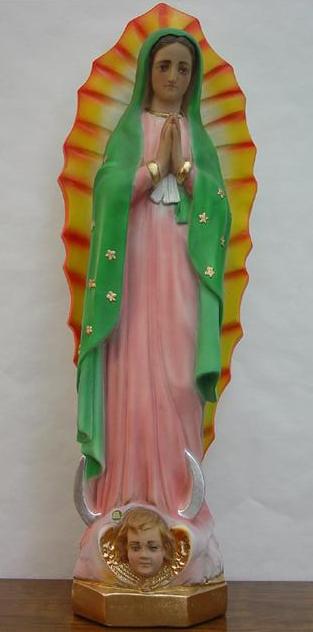 $500 |
OL-Grace
|
OL-Mt.
Carmel w/glass - 24 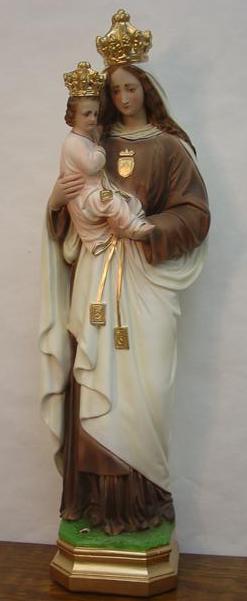 $500 |
OL-Lourdes
|
IH-Mary
|
IH-Ivory
|
|
SH-Jesus
w/glass - 24 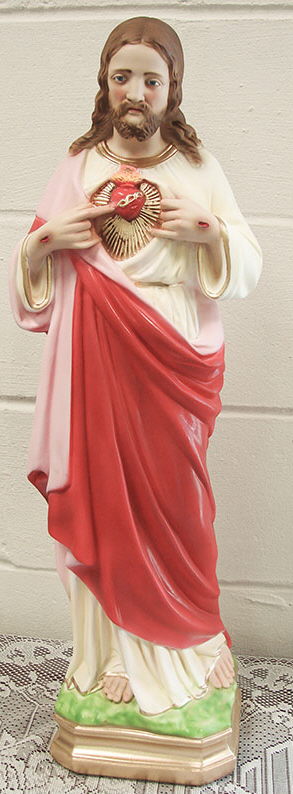 $500 |
SH-Blessing
w/glass - 24  $500 |
Sorrow M
w/glass - 24 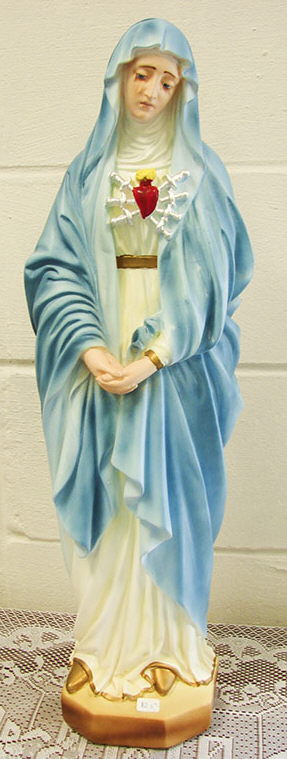 $500 |
Inf.-Prague
w/glass - 24 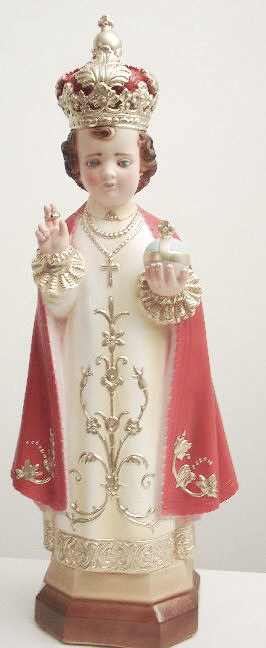 $500 |
OL-Lourdes
|
OL-Mt.
Carmel w/glass - 18 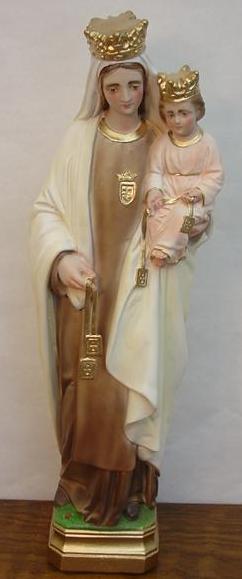 $300 |
|
I
Heart |
I Heart -
Ivory $300 |
OL-Grace
|
SH-Jesus
w/glass - 18 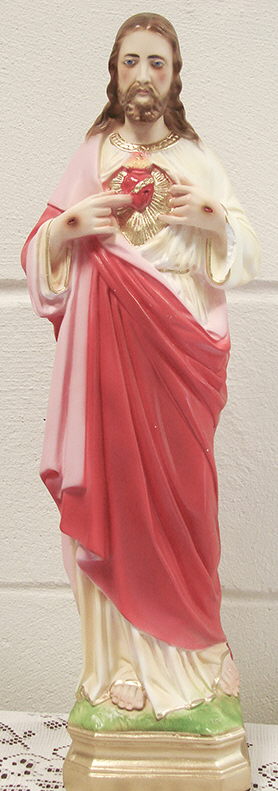 $300 |
OL-Guadalupe
w/glass - 12 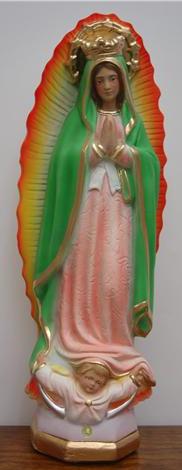 $200 |
|
|
PV-Fatima w/glass - 27  $450 Crown separate |
PV-Fatima w/glass - 18  $250 |
PV-Fatima w/glass - 15  $200 |
OL-Fatima w/glass - 18 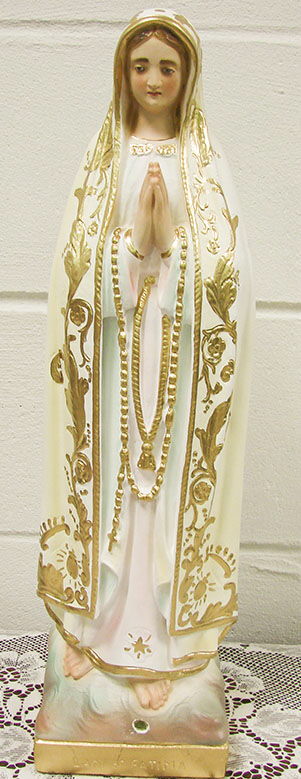 $250 |
PV-Fatima w/glass - 12 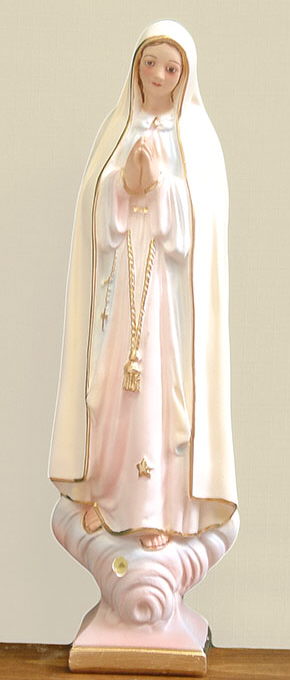 $160 |
OL-Fatima w/glass - 11 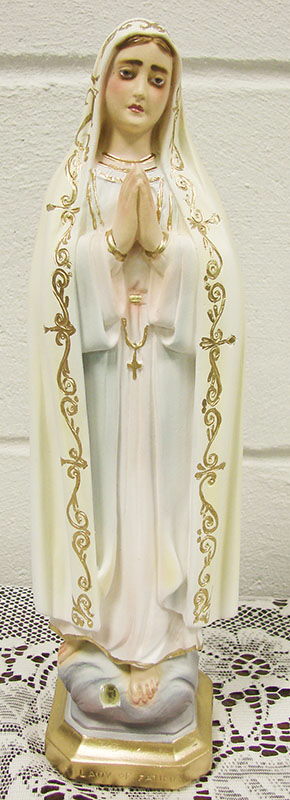 $150 |
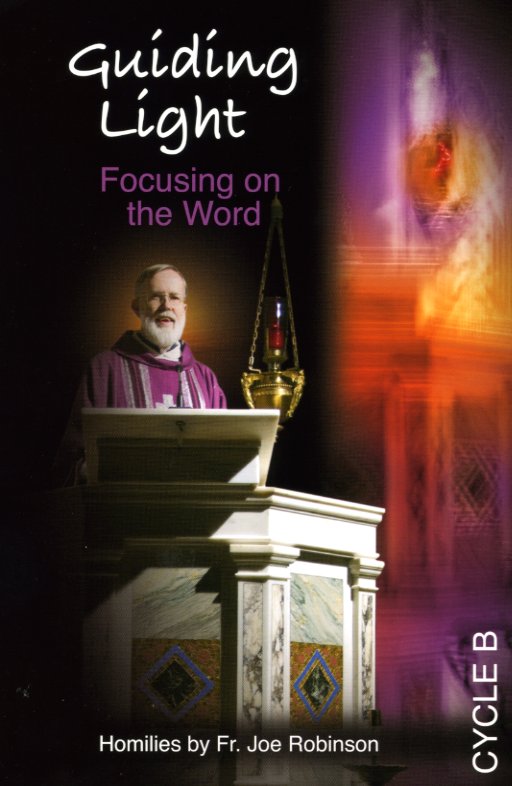
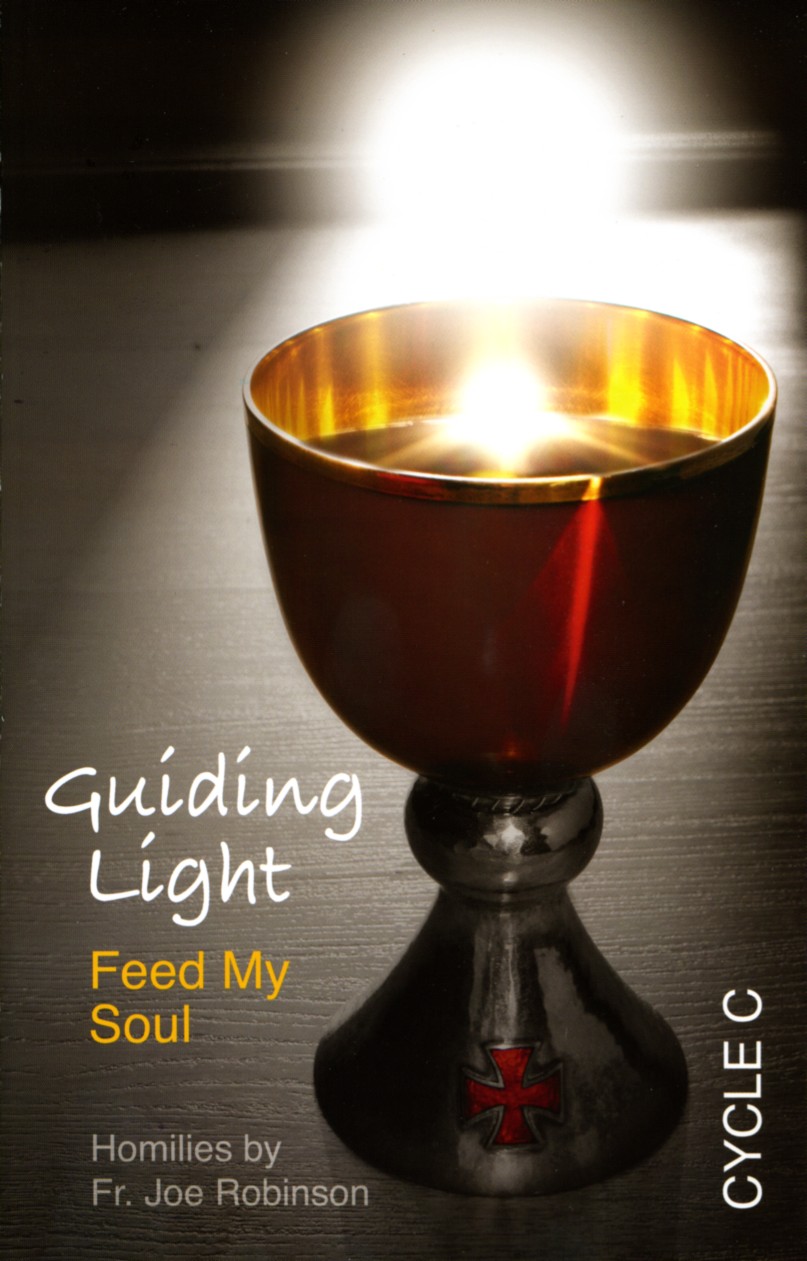
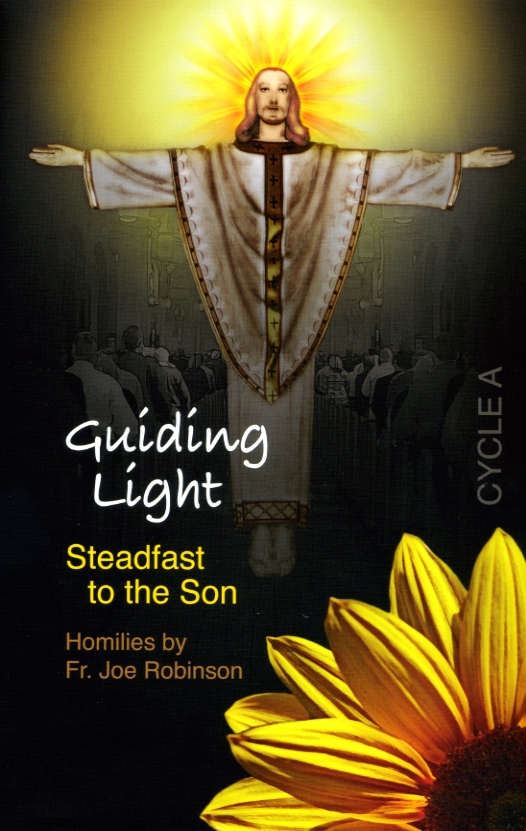

Fr. Joe Robinson's Homily Books - $15.00 each
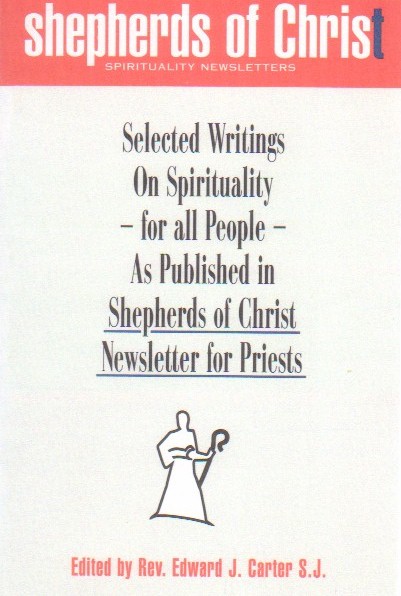

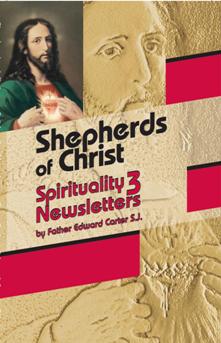
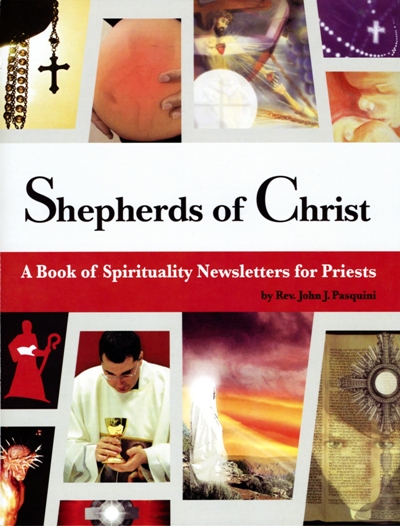
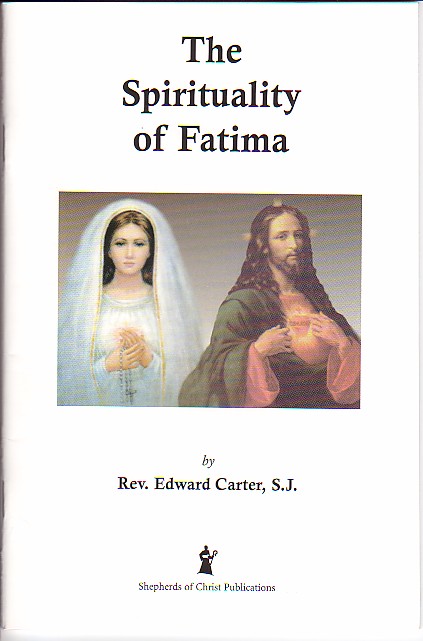
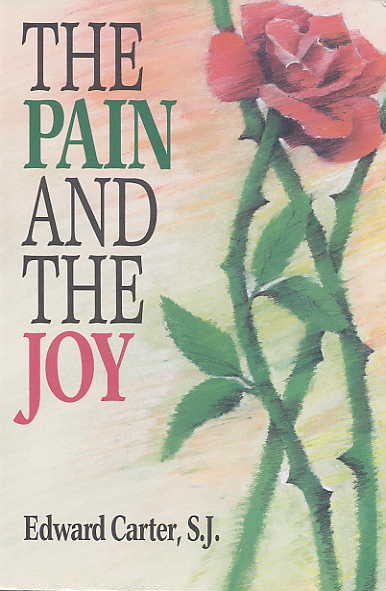
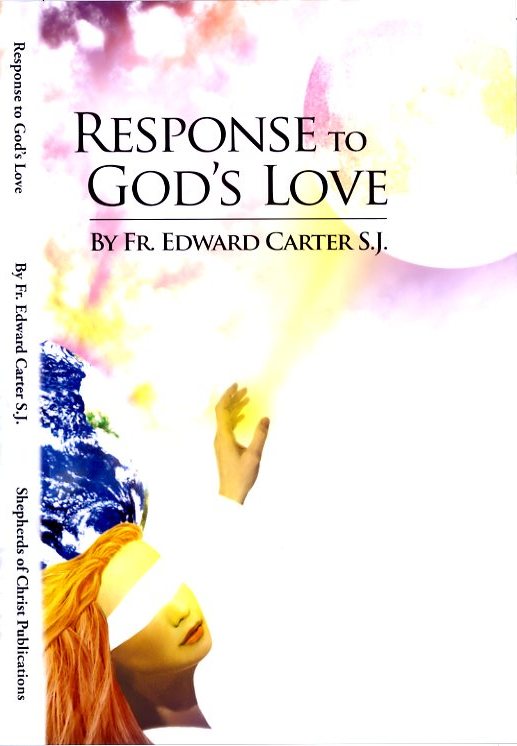
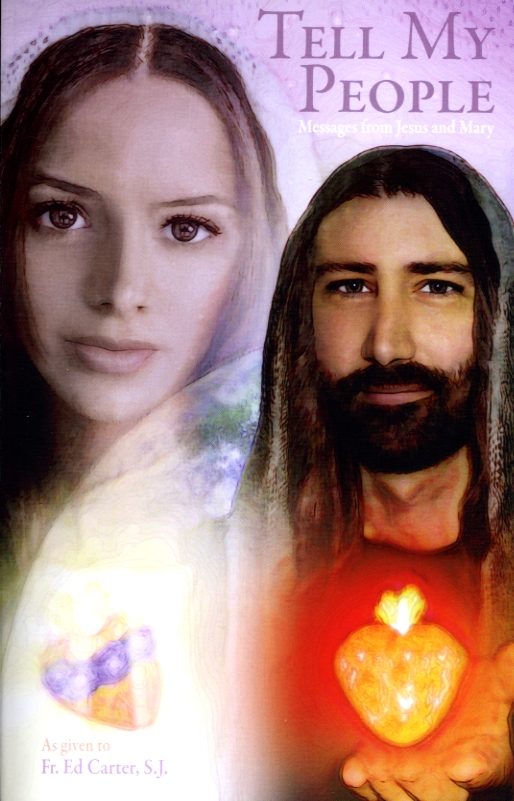
Fr. Edward J. Carter's Books
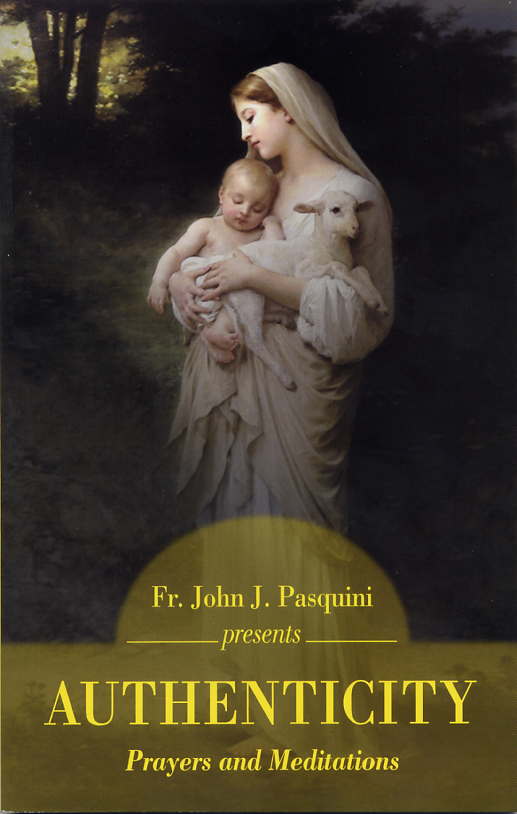
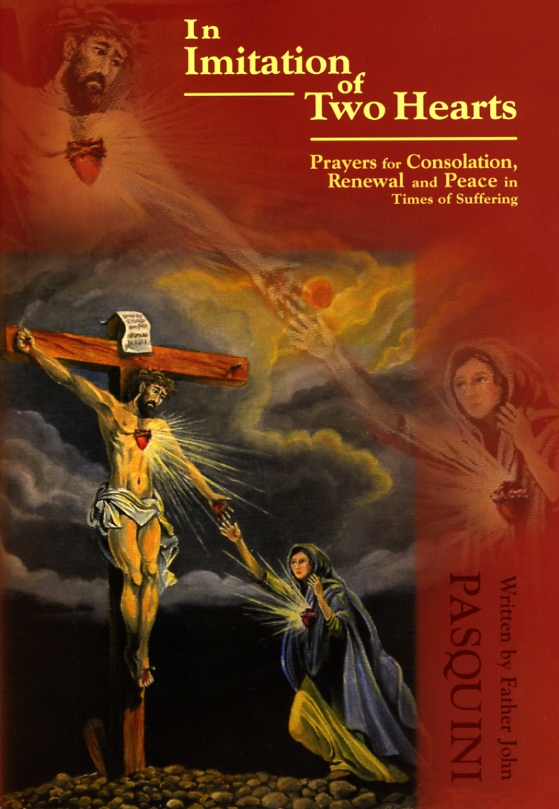
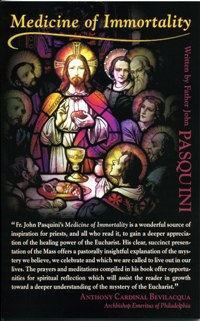
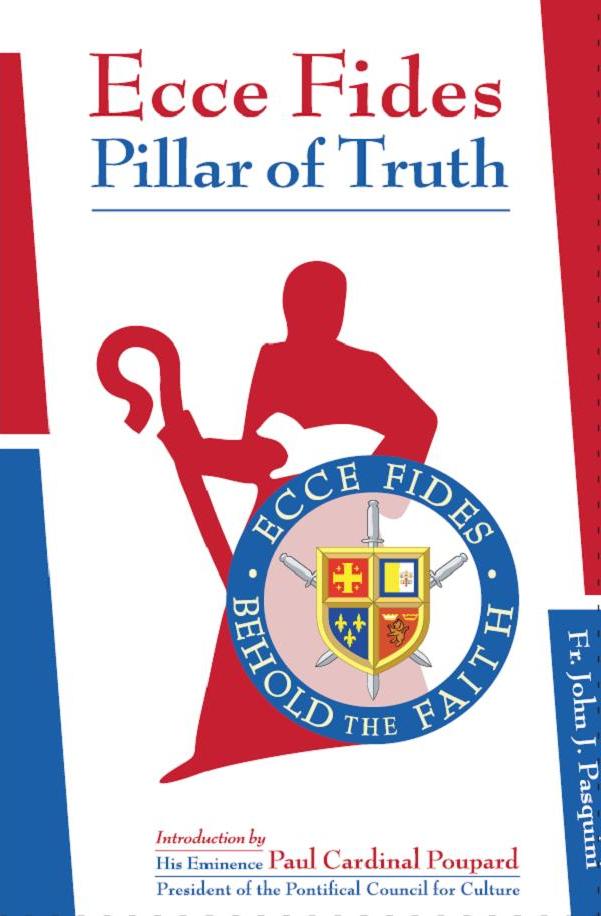
Fr. Pasquini's Books - $10.00 each
Books by Rita Ring
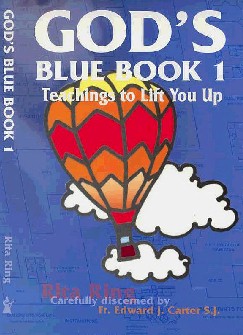 Blue Book I - $10 |
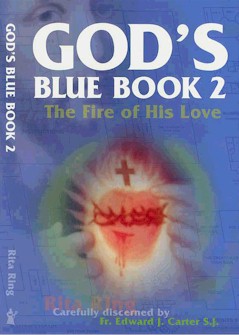 Blue Book II - $10 |
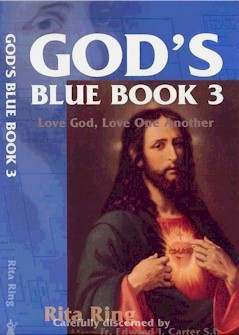 Blue Book III - $10 |
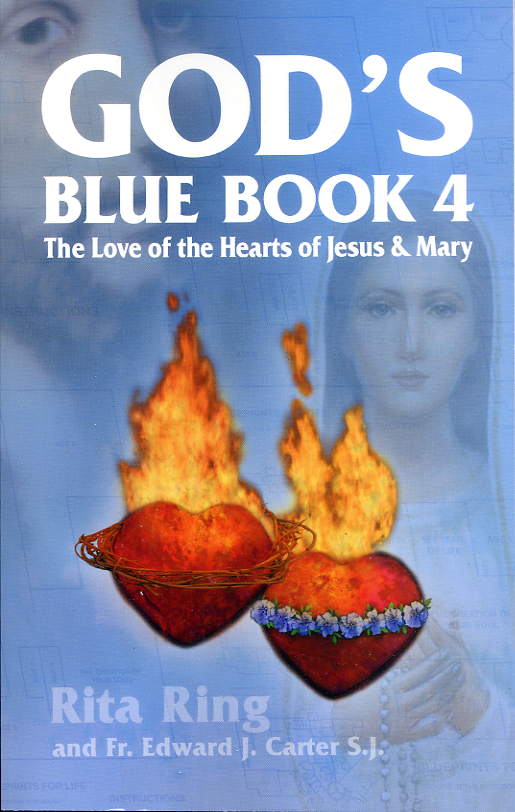 Blue Book 4 -$5 |
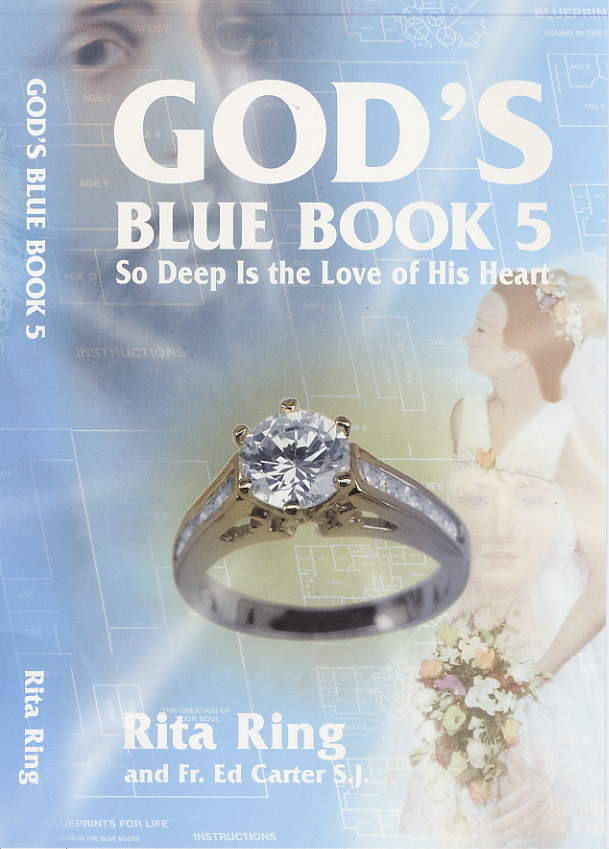 Blue Book 5 - $5 |
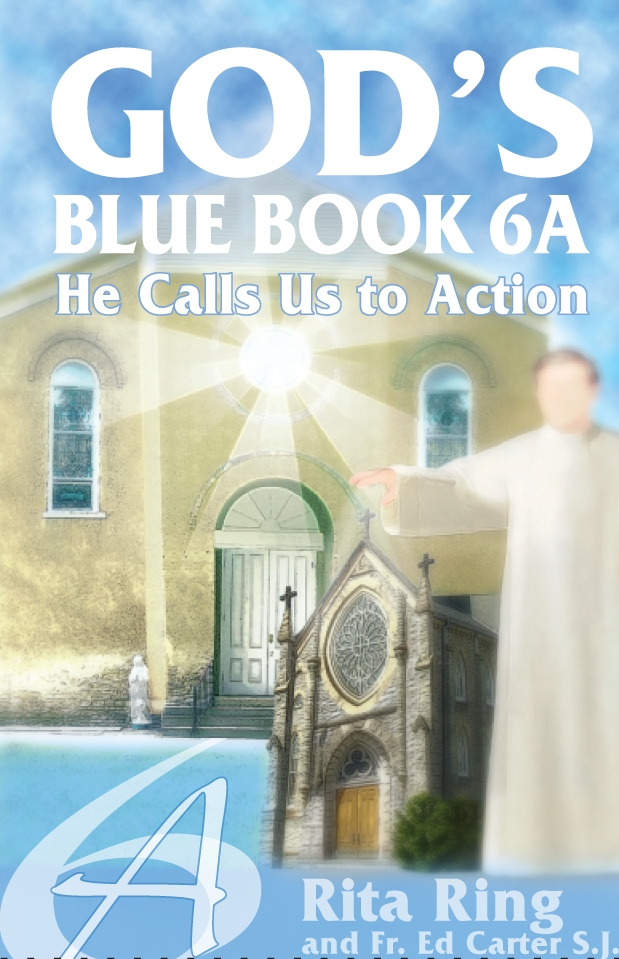 Blue Book 6A - $10 |
Blue Book 6B - $10 |
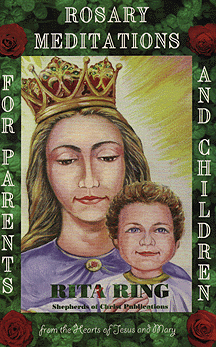
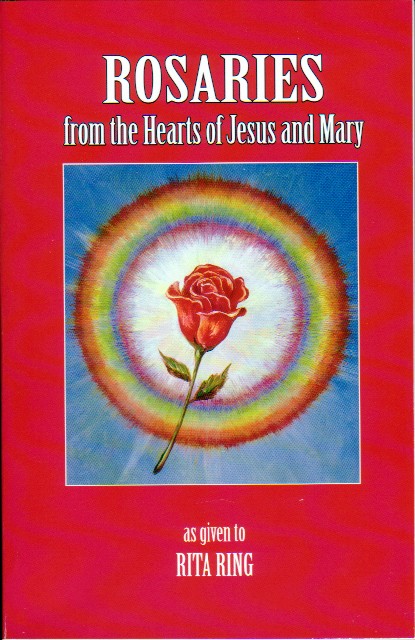
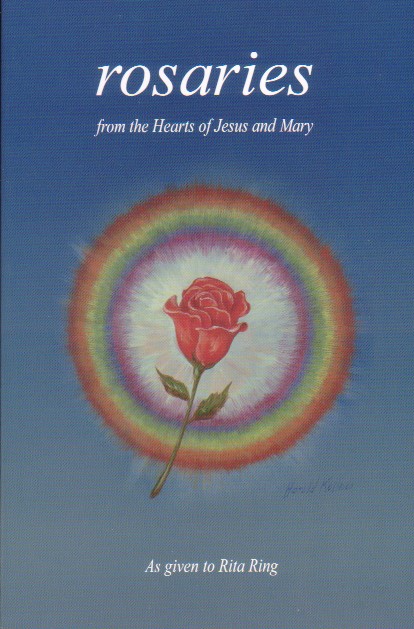
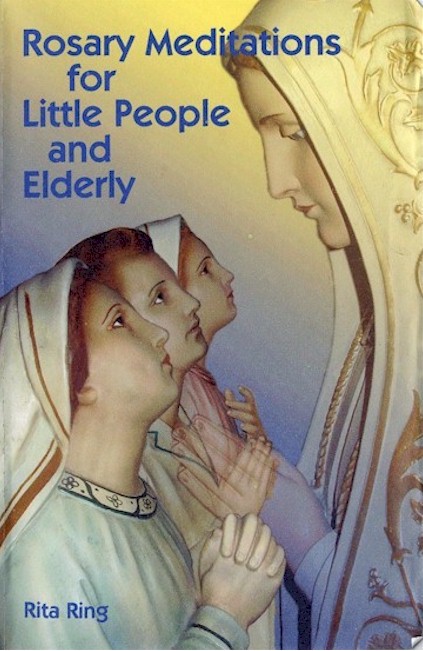
Rosary Books
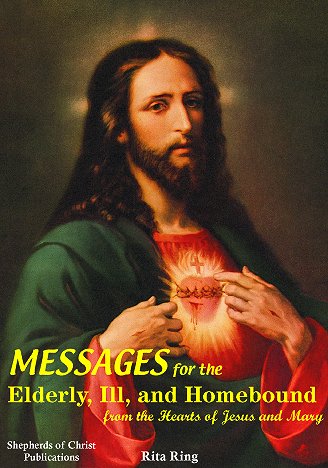
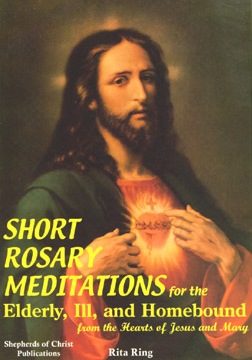
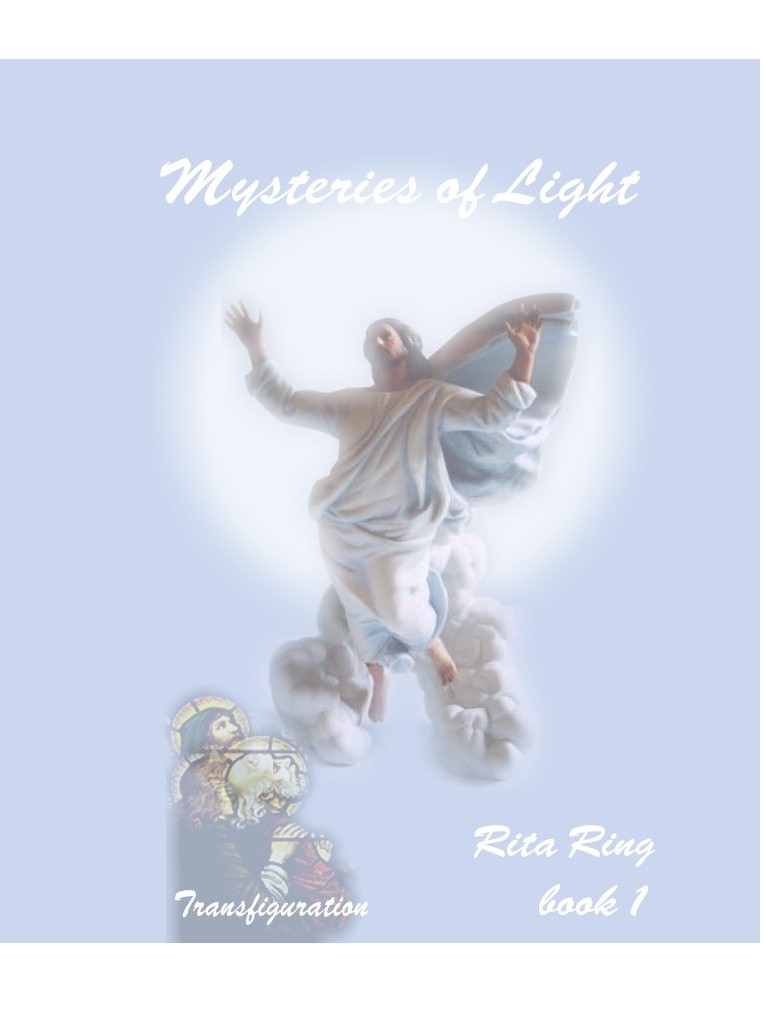
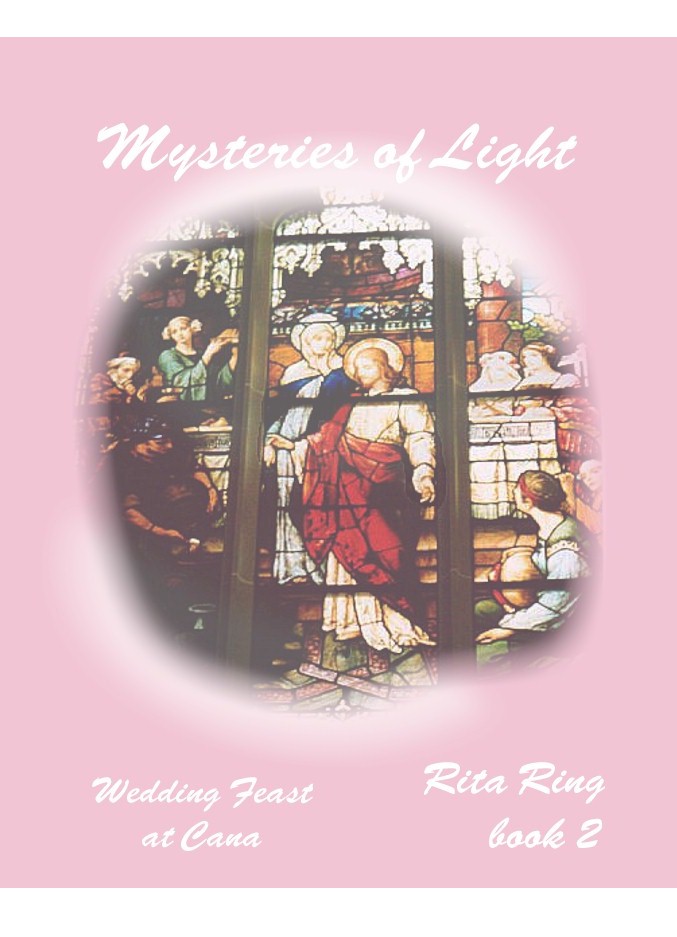
Nursing Home Books - $10 each and Mysteries of Light - $5 each
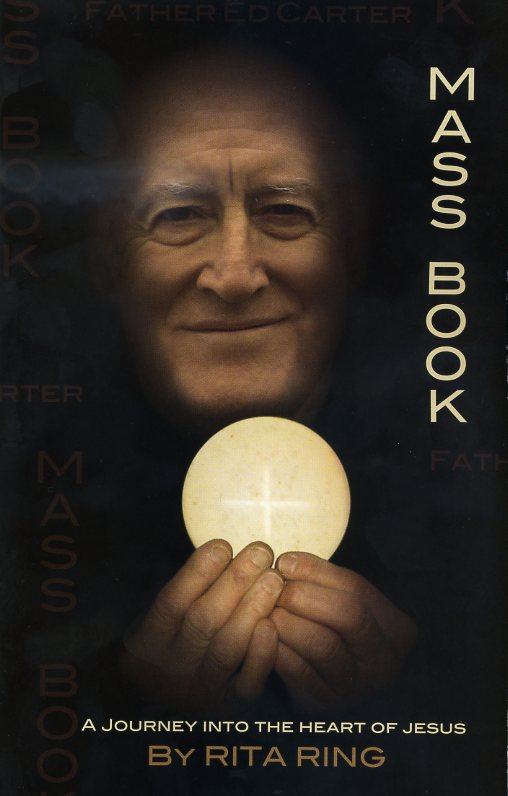
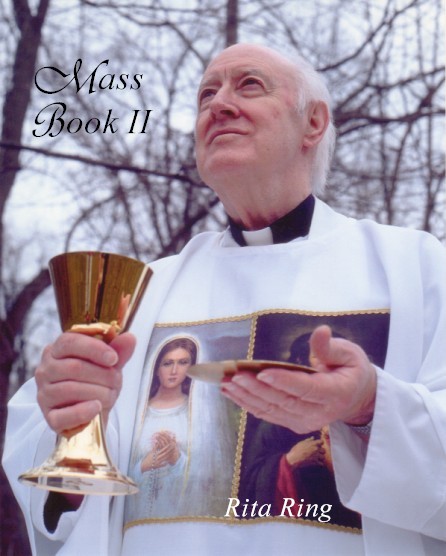
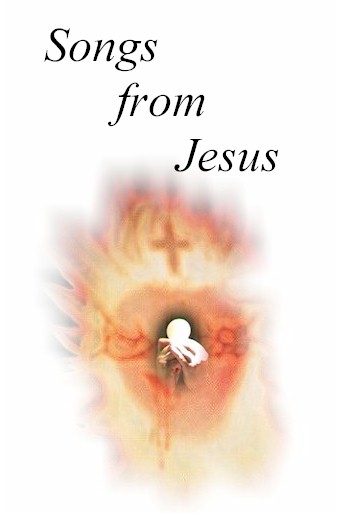
Mass Books and Song Book
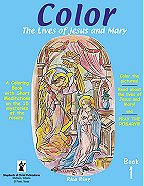
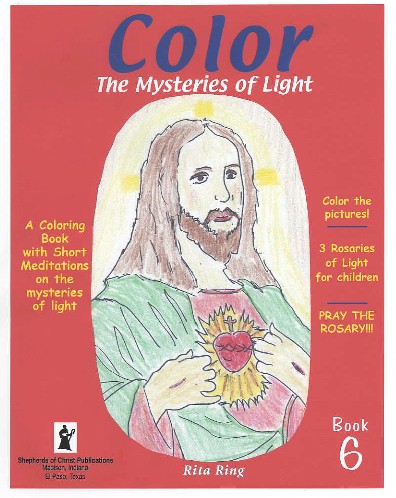
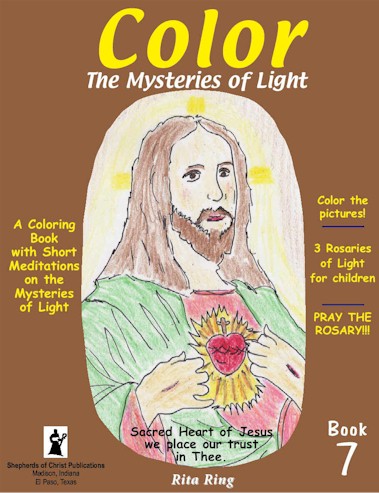
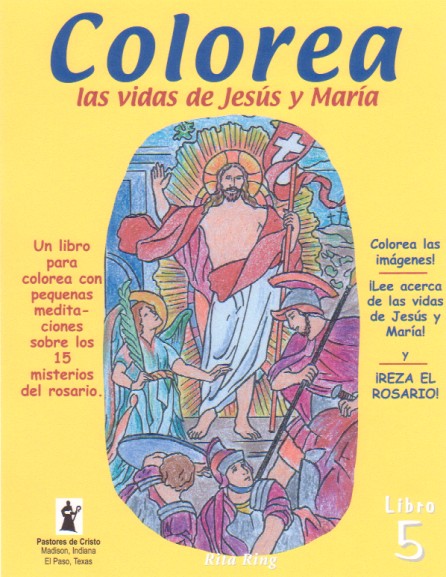
Coloring Books - English and Spanish - $5.00 each
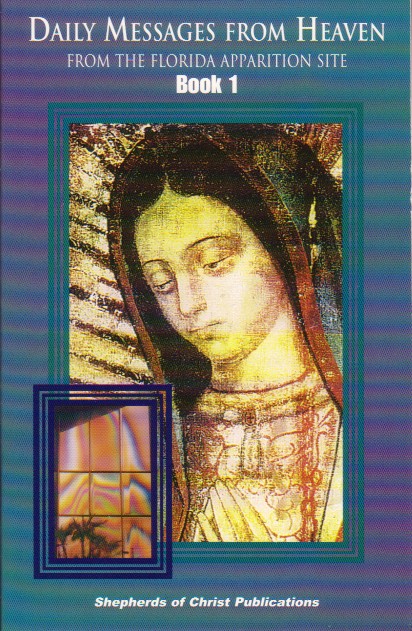
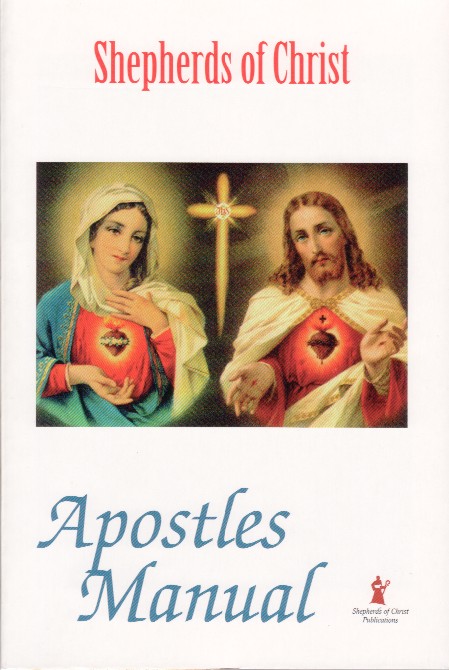
Message Books

3rd Sunday of Advent
Isaiah 48: 17-19
Thus says Yahweh, your redeemer,
the Holy One of Israel:
I am Yahweh your God
and teach you for your own good,
I lead you in the way you ought to go.
If only you had listened
to my commandments!
Your prosperity would have been
like a river
and your saving justice
like the waves of the sea.
Your descendants would have been
numbered like the sand,
your offspring as many as its grains.
Their name would never be cancelled
or blotted out from my presence.
Psalm 1: 1-2, 3, 4, 6
How blessed is anyone who rejects the advice of the wicked
and does not take a stand in the path that sinners tread,
nor a seat in company with cynics,
but who delights in the law of Yahweh
and murmurs his law day and night.Such a one is like a tree planted near streams;
it bears fruit in season
and its leaves never wither,
and every project succeeds.
How different the wicked, how different!Just like chaff blown around by the wind
For Yahweh watches over the path of the upright,
but the path of the wicked is doomed.
Matthew 11: 16-19
‘What comparison can I find for this generation? It is like children shouting to each other as they sit in the market place:
We played the pipes for you,
and you wouldn’t dance;
we sang dirges,
and you wouldn’t be mourners.‘For John came, neither eating nor drinking, and they say, "He is possessed." The Son of man came, eating and drinking, and they say, "Look, a glutton and a drunkard, a friend of tax collectors and sinners." Yet wisdom is justified by her deeds.’
3rd Sunday of Advent
December 14, 2008
– (Isaiah 61:1-2a. 10-11; 1 Thessalonians 5:16-24; John 1:6-8, 19-28) As the celebration of Christ’s birth draws near, joy is in the air. It’s also reflected in today’s liturgy - not just in the rose colored vestments but especially in our readings. The prophet in today’s first reading is speaking to the people of his own day, a people who had been exiles and slaves in Babylon for 50 years. Their exile was over. They had been set free by the king of Persia who had conquered Babylon. They could go home, rebuild their cities and farms and their Temple. The prophet was rejoicing in what God was doing for his people. This passage encourages us to rejoice in what God is doing for us. Incidentally, in St. Luke’s gospel, often called the gospel of joy, this is part of the section from the prophet Isaiah that Jesus chose to read in the synagogue to the people of Nazareth to indicate what his ministry would be about. The response, which is almost always from the Book of Psalms, is today taken from the gospel of Luke. It is Mary’s hymn of joy, called the Magnificat, which she enthusiastically proclaimed when she visited her cousin Elizabeth after the annunciation.INTRODUCTION
HOMILY
– We heard God’s prophet proclaim great joy to the Jews that their exile was over. In the response we heard Mary’s expression of joy when she visited her cousin Elizabeth. We heard St. Paul in the second reading tell us to rejoice always. I would like to describe each of these with a little more detail, then I have a brief commercial followed by some concluding remarks.The prophet in today’s first reading announced the Babylonian exile was over. Great news! The people, for the most part, were somewhat glad to be set free, but it wasn’t an easy time for them. After 50 years they were pretty well settled in Babylon. They had jobs and homes there. Their homes in Israel had been leveled 50 years earlier and there wasn’t much to return to. Nothing remained of their beloved Temple, which the Babylonians had destroyed, except a hill covered with rocks and weeds. The prophet had a real challenge encouraging God’s people to rejoice in their return home. It was only by having faith in what God was doing for them that they could have joy.
Mary, the mother of Jesus, had every reason to be anxious and depressed. Here she was suddenly going to be a mother. Her husband to be, Joseph, was about to break off the engagement. In just a few months, she would suffer disgrace among her family and friends when it became obvious she was going to have a child without being married. In that society she would have no way to support herself financially without a husband. Yet we hear, as she visits her cousin Elizabeth after the annunciation, how she rejoices, not in her misery, but in what God was about to do.
As we know from Paul’s writings, his job as a missionary was not an easy one. He tells us in his second letter to the Corinthians that he was beaten numerous times, put in jail, faced angry mobs, had gone without eating or sleeping, faced death, been shipwrecked three times, suffered from cold and pain, and faced dangers from robbers, his own people, even supposed Christians,. Yet he writes to the Thessalonians: “Rejoice always, pray without ceasing, give thanks!” Why? “Because this is the will of God for you.” If it is God’s will for us that we be joyful, God will certainly help us if we choose to be. Paul is saying we can choose to sit around and feel sorry for ourselves or we can choose to be joyful even in difficult circumstances. We can let self-pity control our lives, or we can choose through faith and with God’s help to rejoice. If we can believe in the great things God has done and is about to do for us, we have reason to rejoice.
Let me make a little commercial here. One of the things Paul says is: “give thanks.” We certainly do that every time we come to Mass. The very word for the Mass, the Eucharist, means “thanksgiving.” There is another way to give thanks today also, through the appeal for the retirement for religious. Most of us were educated by dedicated priests, brothers and sisters who, if they have not died, are now too old to go out and work for a living. There aren’t enough younger religious to support them. So they need our help. You can give thanks for what you received years ago by helping them out today. End of commercial.
Even though life is sometimes burdensome and the economy is bad and there are threats all over the world; even though there are a lot of things we can complain about and a lot of things that could be better, we have more reasons to rejoice than any people who ever lived on this planet. We enjoy wonderful physical blessings and our freedom; we have the benefits of modern medicine and conveniences. Yet true joy in our hearts must still go deeper than all the things we have around us for we must rejoice in what God is doing in our life. St. John the Baptist tells us in today’s gospel, “there is one among you whom you do not recognize.” This is true. By faith we know he is among us, but if we could really recognize him, we would be so full of joy we would be as if we were in heaven. God’s plans for us are grandiose, his light and love so wonderful. If we could experience it all we would be mystics, which wouldn’t be all bad. But most of us have to live in faith and hope until God’s kingdom is realized in us. So like the people we heard about in today’s readings, we rejoice like they did - in faith. Amen.
|
Rita Ring |
|
|
|
|||
Mass Book,
by Rita Ring: Many of the entries in the Priestly
Newsletter Volume II from a spiritual journal came from
this book. These entries |
|
||
|
|
|||||
|
|
Rosary Meditations for
Parents and Children,
by Rita Ring, Short Meditations for both parents and
children to be used when praying the |
|
|||
|
|
||||
|
|
God's Blue Book I by Rita Ring. Open Anywhere — This book will change your life. These are beautiful love letters to us from Jesus. A million books have been printed and circulated. Jesus loves us so much — He wants a personal relationship with us — He wants us to go to the Eucharist and be with Him before the tabernacle. $10 |
|
||
|
|
||||
|
|
God's Blue Book II by Rita Ring. Letters from Jesus about His on fire love — Jesus wants this great intimacy with us — On fire love — Personal love letters from Jesus about the love of His Heart — A book on surrender Fr. Carter said! $10 |
|
||
|
|
||||
|
|
God's Blue Book III by Rita Ring. Fr. Carter's favorite book — It is about loving and forgiving each other — Being pure in heart — A book for unity in family, community, in life!! $10 |
|
||
|
|
||||
|
|
God's Blue Book IV by Rita Ring. This book is about the love Jesus has for Mary and Mary has for Jesus and Jesus and Mary have for us — It is truly the Love of the Two Hearts. Mary appeared every day at the Holy Spirit Center — Fr. Carter was there. Mary's first apparition July 5, 1994. $5 |
|
||
|
|
||||
|
|
God's Blue Book V by Rita Ring. Jesus wants to be the bridegroom of our soul — He is our beloved — Jesus tells us about pure love — how we are to be pure of heart and love God and love others. It is a must, to hear about love from Jesus — Jesus is love — $5 |
|
||
|
|
||||
|
|
God's Blue Book 6A by Rita Ring. Rosaries from Their Hearts during apparitions. Jesus and Mary appeared every day and I received rosaries from Them and They were transcribed from a tape. Also messages of love from Jesus on days of January, 1995 — About Baptism — writings from Fr. Carter and the Scriptures. $10 |
|
||
|
|
|||
|
|
God's Blue Book 6B by Rita Ring. Jesus and Mary appeared every day in February, 1995 — So beautiful — transcribed from a tape — the Stations, 7 Sorrows, prayers in the Prayer Manual, the Holy Spirit Novena Book and the Song Book. Pure love — loving and forgiving — a book about Jesus' love, baptism, grace and Fr. Carter's Newsletter. $10 |
||
Rosaries from the Hearts of Jesus and Mary Book 1. Mary appeared in Clearwater December 17, 1996 in rainbow color and these rosaries left the printer the same day from Apparitions of Jesus and Mary — transcribed from a tape. $10 |
|
||
|
|
||||
|
|
Rosaries from the Hearts of Jesus and Mary Book 2. This is a book of so many rosaries - transcribed from a tape. So many beautiful rosaries. pages $12 |
|
||
|
|
||||
|
|
Short Rosary Meditations for the Elderly, Ill and Homebound. This book is so important with pictures they can open it and lay it on their laps and pray the rosary. $10 |
|
||
|
|
|||
|
|
Messages From Jesus
$ 10.00 plus postage |
|
|
|
Messages for the Elderly, Ill and Homebound. This is a big book of loving messages for nursing home people and homebound from Jesus and Mary — Their lives are so important — united to the Mass offering up their suffering, their lives for the souls of this earth. $10 |
|||
|
|
||||
|
|
Daily Messages from Heaven. First book of Daily Messages. $10 |
|
||
|
|
|
|
||||
|
|
|
|
||
|
|
|
|
||||
|
|
Color the Lives of Jesus and Mary. Volumes 1 through 7. Coloring books and meditations for grade school children and others on the mysteries of the rosary - really good. $5 each. |
|
||
|
|
Coloring the Lives of Jesus and Mary Books 6
and 7
Color the Lives of
Jesus and Mary. Volumes 6 through 7. Coloring books
and meditations for grade school children and others on
the mysteries of the rosary - really good. $5 each. |
|
|
God's Blue Book I on CD, Disk #1
|
|
Mysteries of Light
Rosary Book
|
|
|
Mysteries of Light
Rosary Book
|
|
|
Apostle's Manual
Apostles Manual. About the Movement - the structure of the Movement — All Ministries - from the time 3 months before Mary appeared in Clearwater and 3 months after. Rosaries of the 13ths, Fr. Carter's Newsletters. Messages from God the Father — Reaching the priests, the Church, the schools and the world. $20 |
|
|
Songs From Jesus
Songs from Jesus Songbook. These loving songs were given from Jesus. So beautiful — Love Songs from Jesus of His love - helping us have pure and loving hearts. $3
|
|
Shepherds of Christ Holy Spirit Novena Holy Spirit Novena Booklet. In four languages with the Imprimatur with 18 scripture readings for two complete novenas – this very powerful Holy Spirit Novena has prayers for prayers for Protection by the Blood of Jesus, Healing, Strength and Light, To Be One with God, Father, Son and Holy Spirit, One with Jesus, To Dwell in the Hearts of Jesus and Mary, Prayer for the Holy Spirit and His Gifts, and the Word Alive in Our Hearts. All these prayers take about 10 minutes daily recited out loud. $1
|
|
|
Shepherds of Christ Holy Spirit Novena CD
|
|
|
Colorea
1 thru 5
|
|
|
Para
Comprender Mejor La Santa Misa
|
|
|
Meditaciones del Rosario
|
Fr. Joe
Robinson
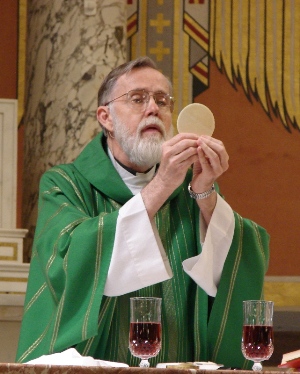
Fr.
Joseph
Robinson
has
dedicated
his
life
to
serving
Christ
and
the
Church
for
over
40
years.
Guiding Light - Steadfast to the Son
Inspiring Homilies Covering Cycle A of the Liturgical Year
$ 10.00 plus postageGuiding Light homily series - Steadfast to the Son - Cycle A — The sunflower is a great example of how we should be steadfastly guided by light. What a powerful thought that this exceptional plant is not stuck in one pose day in and day out, yet adaptable and magnetized to the sun. We feel the same about our Son. Our heads turns to face Christ as each day presents its challenges to find light. We join together like plants in a field and soak up the Son through the pulpit. We are a warm circle of strength using the wind of our breath to carry our priests' words, Christ's words, to new rich soil. $15
Guiding Light - Feed My Soul
Inspiring Homilies Covering Cycle C of the Liturgical Year
$ 10.00 plus postageGuiding Light - Feed My Soul - Cycle C — In a world rapidly advancing and encouraging personal gain, we are faced with modern problems. There is a challenge to find time in our busy schedules for Sunday Mass or a family meal. We are able to research, shop, bank and even work without hearing one human voice. It is no wonder that we may often feel disconnected and famished at our week's end. In Fr. Joe's third book of homilies from Cycle C, we are reminded of the charity that Christ intended us to show each other. We have a calling to turn the other cheek and be the Good Samaritan to others. We are rewarded with the Father's kingdom and love when we are not worthy. We are not left alone or hungry. $15
Guiding Light - Focusing on the Word
Inspiring Homilies Covering Cycle B of the Liturgical Year
$ 10.00 plus postageGuiding Light - Focusing on the Word - Cycle B — At times we may feel that our path to Christ is a bit "out of focus". Like the disciples in the Book of Mark, this ordinary life clouds our vision of Christ's Divinity. We may doubt the practicality or possibility of applying His teachings and example to our modern life. Cycle B's homilies are a "guiding light" to help us realize Jesus' Messianic greatness and His promise of better things to come. $15
Guiding Light - The Word Alive in Our Hearts
Inspiring Homilies covering partial year of Cycle A by Fr. Joe Robinson
$ 5.00 plus postageGuiding Light - The Word Alive in Our Hearts. - Cycle A (partial) — Homilies by the Reverend Joe Robinson given at St. Boniface Church in Cincinnati, Ohio. It is a tremendous honor Fr. Joe has allowed us to share these great gifts with you – for greater holiness and knowing more and more about God. $10
|
Fr. Edward J. Carter |
|
|
|||||||||||||||||||||||||||||||||||||||||||||||||||||||||||||||||||||||||||||||||||||||||
|
Light, Happiness, & Peace
Journeying Through Traditional Catholic Spirituality Author: Fr. John J. Pasquini
$ 10.00 plus postageThis book Light, Happiness and Peace is a journey into the spiritual life — an awakening of deeper life IN HIM. Here are some of the comments we received from bishops and cardinals about the book. Cardinal – Pontifical Council for Culture – Vatican City “I am sure that this book, Light, Happiness and Peace through a discussion on traditional Catholic Spirituality will contribute in bringing back prayer into the mainstream of life.” $10
In Imitation of Two Hearts
Prayers for Consolation, Renewal and Peace in Times of Suffering Author: Fr. John J. Pasquini
$ 10.00 plus postageIn Imitation of Two Hearts - Prayers for Consolation, Renewal and Peace in Times of Suffering Fr. John J. Pasquini leads a suffering soul to the gentle Hearts of Jesus and Mary. In these most loving Hearts - the prayers by Fr. John Pasquini - help the person suffering to know more deeply the pascal mystery of death/resurrection. President of the Pontifical Council for Health $10
Authenticity
Authenticity - Prayers and Meditations Author: Fr. John J. Pasquini
$ 10.00 plus postageAuthenticity, the Yellow Book of prayers by Fr. John Pasquini, can lead the soul into deeper intimacy with the Father, Son, and Holy Spirit, can lead to greater love of Mary which leads to the unitive life and greater holiness. The book of prayers Authenticity by Fr. John J. Pasquini is to help one grow ever deeper in the Unitive life. Apostolic Nuncio – Archbishop – Philippines “With Authenticity, much is gained in prayer, and much is accomplished through prayer. More especially if prayer is directed in behalf of the Church.” $10
Medicine of Immortality
Prayers and Meditations for Mass and Eucharistic Adoration Author: Fr. John J. Pasquini
$ 10.00 plus postage“In Medicine of Immortality, Father John Pasquini offers his readers the richness of Catholic devotional prayer, the wisdom of the Fathers and, most of all, the fruits of his own prayer and meditation before the Blessed Sacrament. I recommend this book to all who wish to grow in their love for the Lord, who sustains the life of His Church through the precious gift of His Body and Blood.” Francis Cardinal George, O.M.I., Archbishop of Chicago $10
Ecce Fides
Pillar of Truth - Dedicated to defending Catholic beliefs through reason, Scripture, and the life of the Holy Spirit Author: Fr. John J. Pasquini
$ 10.00 plus postageEcce Fides is a work dedicated to defending Catholic beliefs through reason, Scripture, and the life of the Holy Spirit. "It is important that we (as people of God) return to the source of life, our faith, which is usefully exposed in this volume, and take it out to our contemporaries, evangelizing them and their cultures and inculturating the Gospel." Cardinal – Pontifical Council for Culture – Vatican City $10
Shepherds of Christ Spirituality Newsletters
Author: Fr. John J. Pasquini
$ 35.00 plus postageShepherds of Christ, a book of Spirituality Newsletters, is a compilation of the first nine newsletters from Fr. John J. Pasquini begining in August 2006. The Newsletter has been circulated to the priests and hierarchy spreading devotion to the Sacred Heart and the Immaculate Heart, promoting love for the Eucharist, greater love for the Church, the Priesthood, Mary and the Holy Spirit, the Mass, Prayer, and greater intimate relationship with God. $35
Authenticity Ocean DVD
The Authenticity Prayer Book is read with the Ocean as a backdrop.
$ 10.00 plus postageDVD - Prayers from the Authenticity Book read by Rita Ring on the ocean — it is beautiful. 410
Nursing Home Mass DVD
A special mass by Fr. John J. Pasquini for those in nursing homes or homebound.
$ 10.00 plus postageDVD - A beautiful Mass was done by Fr. John J. Pasquini for Nursing homes and assisted living. It was done at St. Joseph's magnificent chapel — St. Joseph's assisted living in Jupiter, Florida. It last about 33 minutes. We call it the golden Nursing Home Mass from St. Joseph's. $10
Consolation DVD
Give this DVD as a sympathy present.
$ 10.00 plus postageConsolation by Fr. John J. Pasquini — upon the passing of a loved one. Fr. Pasquini has done a beautiful gift of his most wonderful homily given when someone dear has died. It can be given as a tremendous gift. $10
Divine Mercy Chaplet CD
Give this DVD as a gift.
$ 10.00 plus postageDivine Mercy Chaplet CD. Prayed by Fr. John J. Pasquini $10
|
Special 27" Pilgrim Virgin of Fatima/Clearwater Statue with Glass
27" Statue with crown
$ 450.00 plus shipping
Special 18" Pilgrim Virgin of Fatima/Clearwater Statue with Glass
$ 250.00 plus shipping
Special 15" Pilgrim Virgin of Fatima/Clearwater Statue with Glass
White gown with gold trim around mantel
$ 200.00 plus shipping
Special 12" Pilgrim Virgin of Fatima/Clearwater Statue with Glass
White gown with gold trim around mantel
$ 165.00 plus shipping
Special 18" Our Lady of Fatima/Clearwater Statue with Glass
Blue and Pink gown with a rosary over her hand.
$ 250.00 plus shipping
Special 11" Our Lady of Fatima/Clearwater Statue with Glass
Blue and Pink gown.
$ 150.00 plus shipping
Crucifix by Felix - Hand Carved
Crucifix with incredible detail!
$ 750.00 plus shipping
Imitation of Two Hearts
Giclee Art Print on Canvas
$ 150.00 plus shipping
Lucia's Vision
Giclee Art Print on Canvas by Harold Kellner
$ 150.00 plus shipping
Mary's Image 12 x 16
Giclee Art Print on Canvas of Mary's image with a sliver of glass and a little bottle of Jesus and Mary water. The glass will be fixed behind the back of the picture.
$ 200.00 plus shipping
Blue Crystal Rosary
Rosary with the Image of Our Lady of Clearwater
6mm - $ 30.00 plus shipping
8mm - $ 40.00 plus shipping
Red Crystal Rosary
Rosary with the Image of Our Lady of Clearwater
6mm - $ 30.00 plus shipping
8mm - $ 40.00 plus shipping
Clear Crystal Rosary
Rosary with the Image of Our Lady of Clearwater
6mm - $ 30.00 plus shipping
8mm - $ 40.00 plus shipping
Mug
Mug with the Image of Our Lady of Clearwater
$ 15.00 plus shipping
Call Rosie
1-888-211-3041
or
1-727-725-9312
Statues
OL-Guadalupe
w/glass - 28
OL-Grace
w/glass - 24OL-Mt. Carmel
w/glass - 24
OL-Lourdes
w/glass - 24
IH-Mary
w/glass - 24
IH-Ivory
w/glass - 24
SH-Jesus
w/glass - 24SH-Blessing
w/glass - 24
Sorrow M
w/glass - 24
Inf.-Prague
w/glass - 24
OL-Lourdes
w/glass - 18
OL-Mt. Carmel
w/glass - 18I Heart
w/glass - 18
I Heart - Ivory
w/glass - 18
OL-Grace
w/glass - 18
SH-Jesus
w/glass - 18OL-Guadalupe
w/glass - 12
PV-Fatima
w/glass - 27
PV-Fatima
w/glass - 18
PV-Fatima
w/glass - 15
OL-Fatima
w/glass - 18
PV-Fatima
w/glass - 12
OL-Fatima
w/glass - 11
St. Padre Pio
St. Joseph
St. Therese
St. Francis
St. Anthony
St. Claire
Limpias
St. Jude
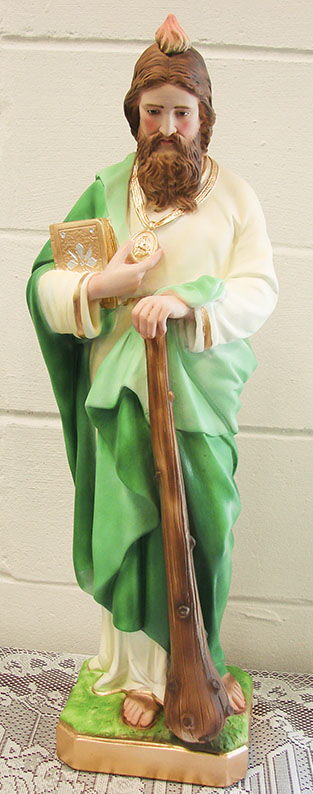
Divine Mercy
Holy Family
Angel
St. Philomena
Pieta - Marble
Pieta - Color
Holy Family 12
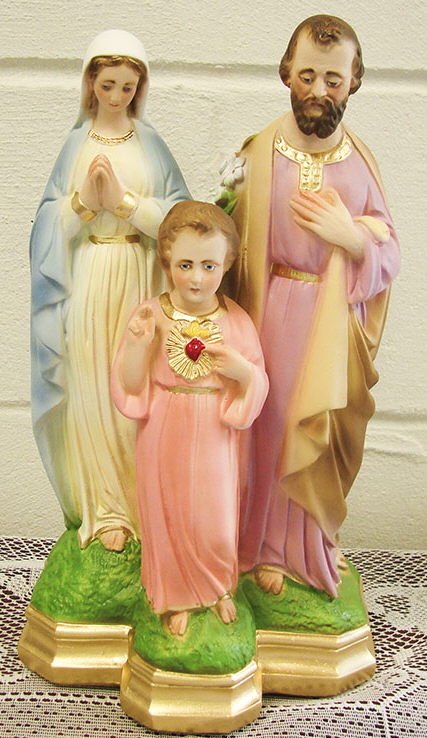
St. Anthony - 18
St. Francis - 18
St. Joseph - 18
St. Therese - 18
St. Rita - 18
St. Clare - 12
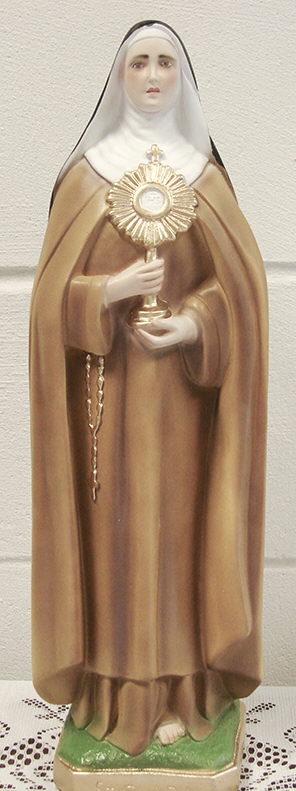
St. Rita - 12
St. Padre Pio - 12
Divine Mercy - 12
St. Michael - 11
Limpias - 8
Shepherds of Christ Ministries
P. O. Box 627
China, IN 47250
Toll free - 1-888-211-3041
Local - 1-812-273-8405
fax - 1-812-273-3182
web: www.sofc.org
e-mail: info@sofc.org
Size
Price
Quantity
Holy Family
24"
$180
Limpias
24"
$125
St. Anthony
24"
$125
St. Claire
24"
$125
St. Francis
24"
$125
St. Joseph
24"
$125
St. Jude
24"
$125
St. Padre Pio
24"
$125
St. Therese
24"
$125
Divine Mercy
22"
$125
Angel
22"
$100
St. Philomena
20"
$100
St. Philomena
16"
$65
St. Joseph
18"
$65
St. Francis
18"
$65
St. Anthony
18"
$65
St. Rita
18"
$65
St. Therese
18"
$65
Pieta - Color
15"
$125
Pieta - Marble
15"
$125
Holy Family
12"
$75
St. Padre Pio - standing
12"
$100
St. Padre Pio - sitting
9"
$100
St. Michael
11"
$40
St. Rita
12"
$40
Divine Mercy
12"
$50
St. Claire
12"
$40
Pieta - Color
8"
$75
Pieta - Marble
8"
$75
Limpias
8"
$25
Our Lady of Guadalupe w/glass
28"
$500
Our Lady of Mt. Carmel w/glass
24"
$500
Immaculate Heart of Mary w/glass
24"
$500
Immaculate Heart - Ivory w/glass
24"
$500
Infant of Prague w/glass
24"
$500
Our Lady of Grace w/glass
24"
$500
Our Lady of Lourdes w/glass
24"
$500
Sacred Heart of Jesus w/glass
24"
$500
Sacred Heart -Blessing w/glass
24"
$500
Sorrowful Mother w/glass
24"
$500
Immaculate Heart of Mary w/glass
18"
$300
Immaculate Heart - Ivory w/glass
18"
$300
Sacred Heart of Jesus w/glass
18"
$300
Our Lady of Lourdes w/glass
18"
$300
Our Lady of Grace w/glass
18"
$300
Our Lady of Mt. Carmel w/glass
18"
$300
Our Lady of Guadalupe w/glass
12"
$200
Fatima w/glass
11"
$150
Fatima w/glass
18"
$250
Pilgrim Virgin w/glass
12"
$160
Pilgrim Virgin w/glass
15"
$200
Pilgrim Virgin w/glass
18"
$250
Pilgrim Virgin w/glass
27"
$450
Call for Shipping Price (1-888-211-3041)
Name
Sub-Total
Address
IN Tax (7%)
City
Shipping
State Zip
Donation
Telephone
Order Total
Call Rosie
1-888-211-3041
or
1-727-725-9312
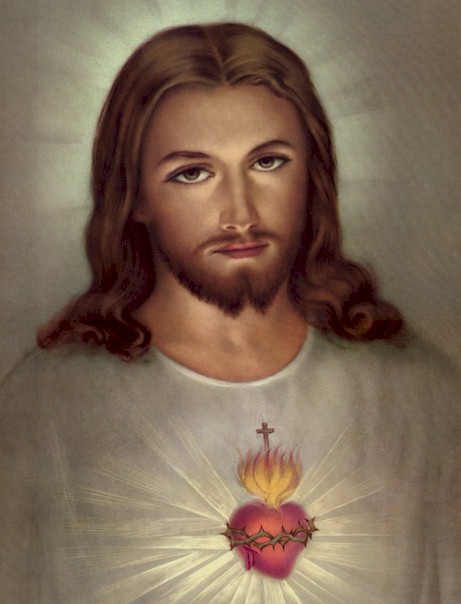
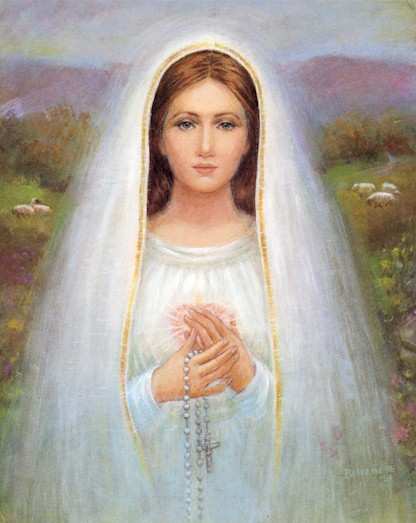
Immaculate Heart and Sacred Heart Pictures Available
with & without frames - different sizes available
 Copyright
© 2011 Shepherds of Christ.
Copyright
© 2011 Shepherds of Christ.
Rights for
non-commercial
reproduction granted:
May be copied in its entirety, but neither re-typed nor edited.
Translations are welcome but they must be reviewed for moral and
theological accuracy by a source approved by Shepherds of Christ Ministries
before any distribution takes place. Please contact us for more information.
All scripture quotes are from the
New Jerusalem Bible, July 1990, published by Doubleday.
Revised: January 1, 2011
URL: http://www.sofc.org
Contact Information for Shepherds
of Christ
Email: info@SofC.org
Shepherds of Christ Ministries
P.O. Box 627
China, Indiana 47250
Telephone: (toll free) 1-888-211-3041 or (812) 273-8405
FAX: (812) 273-3182